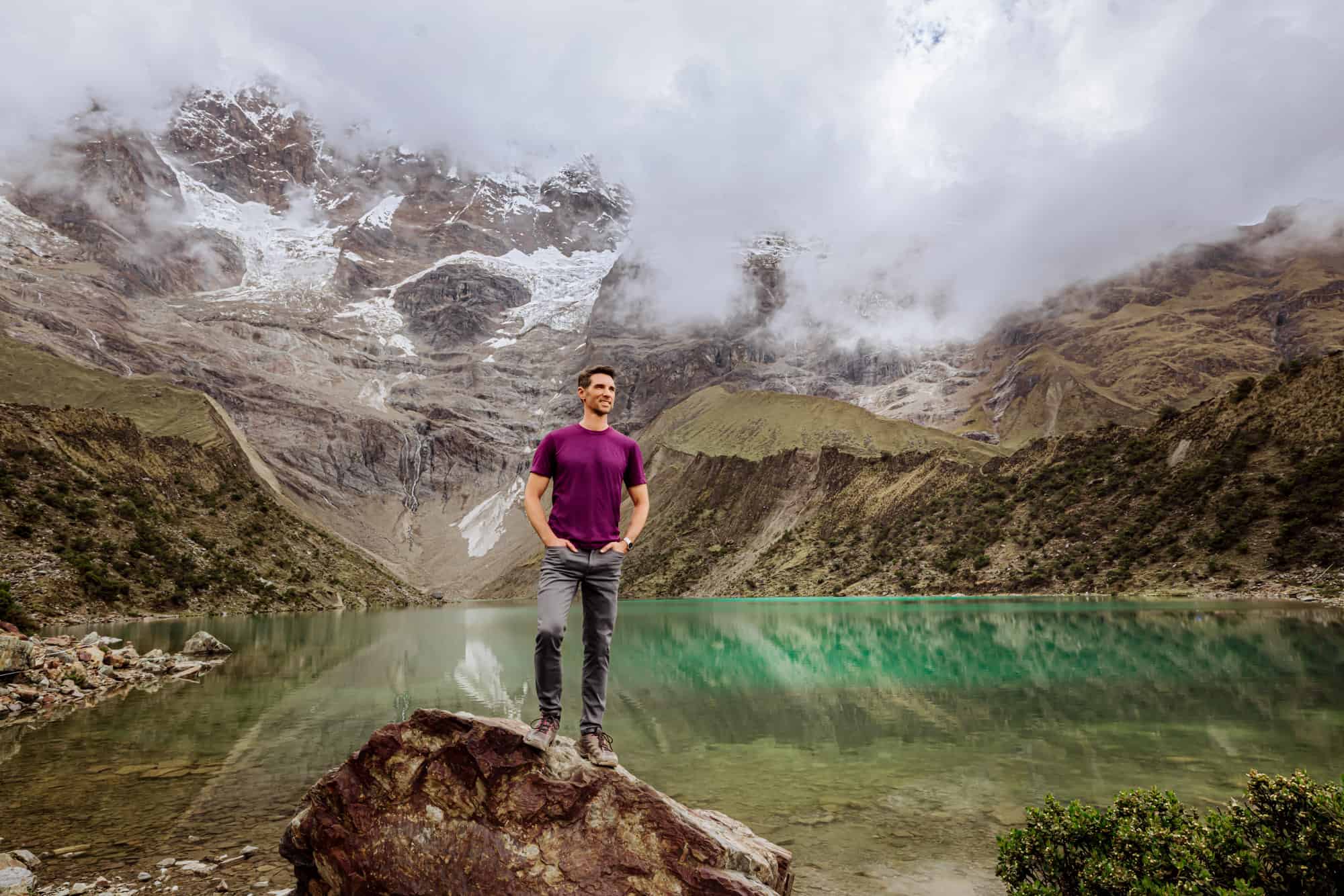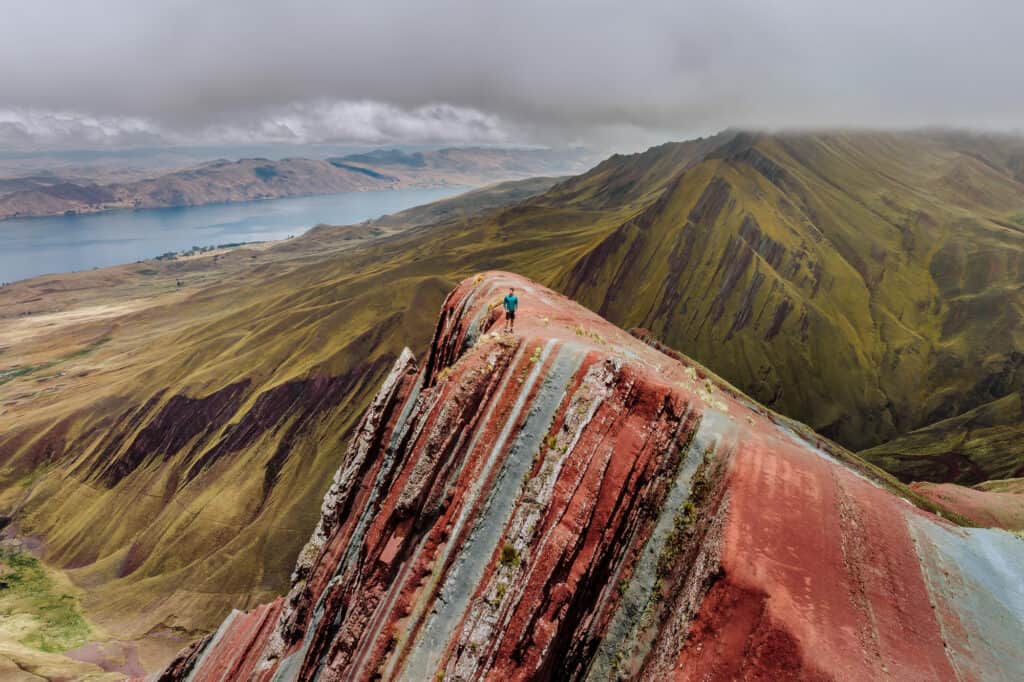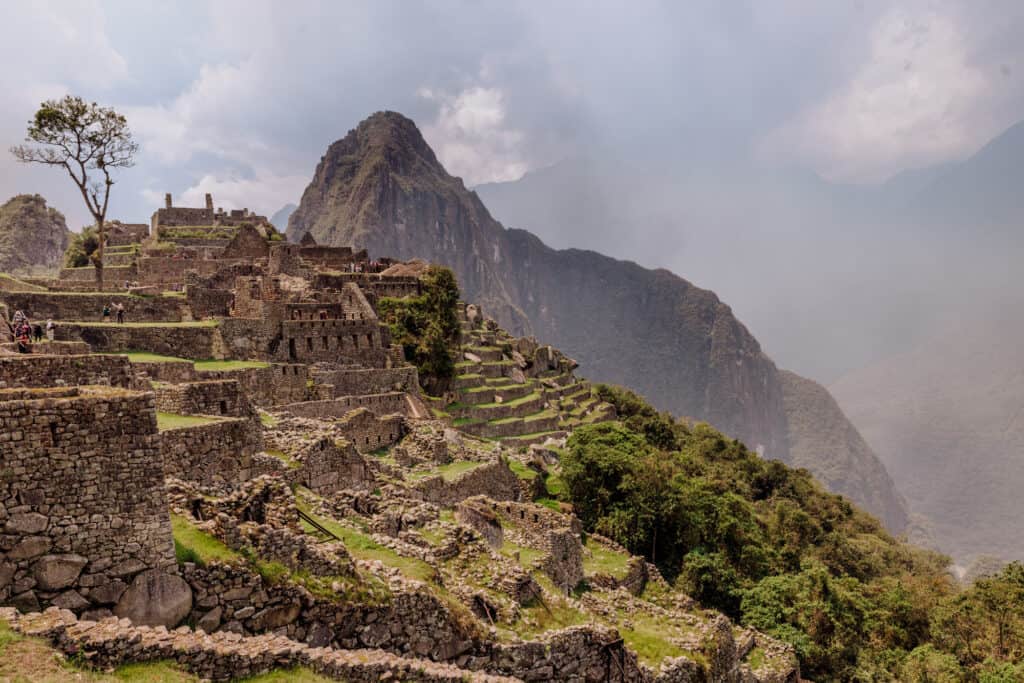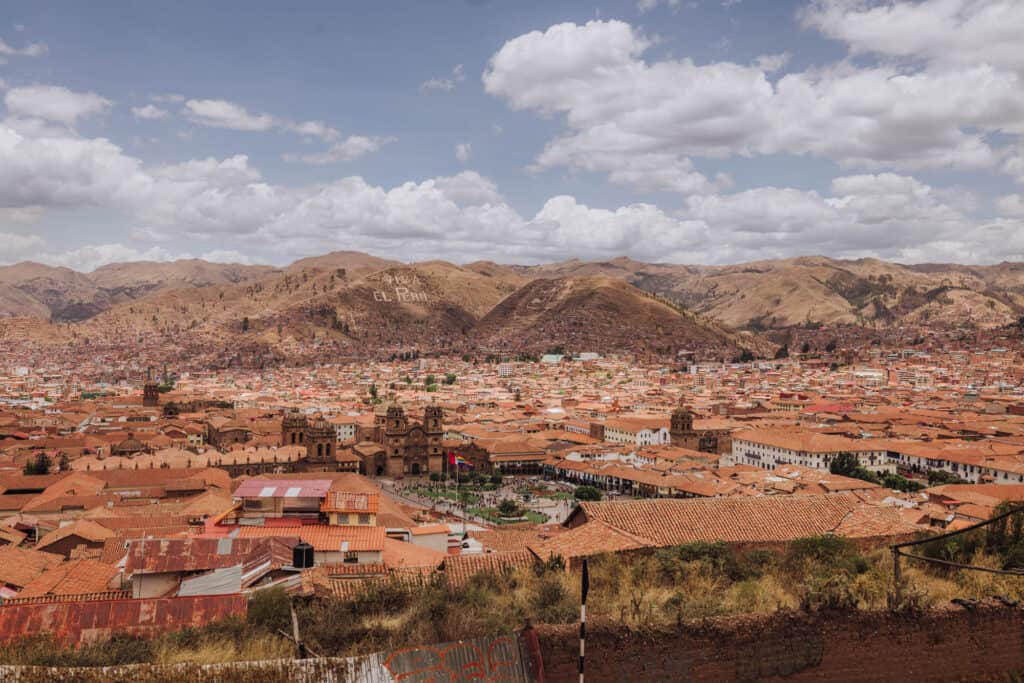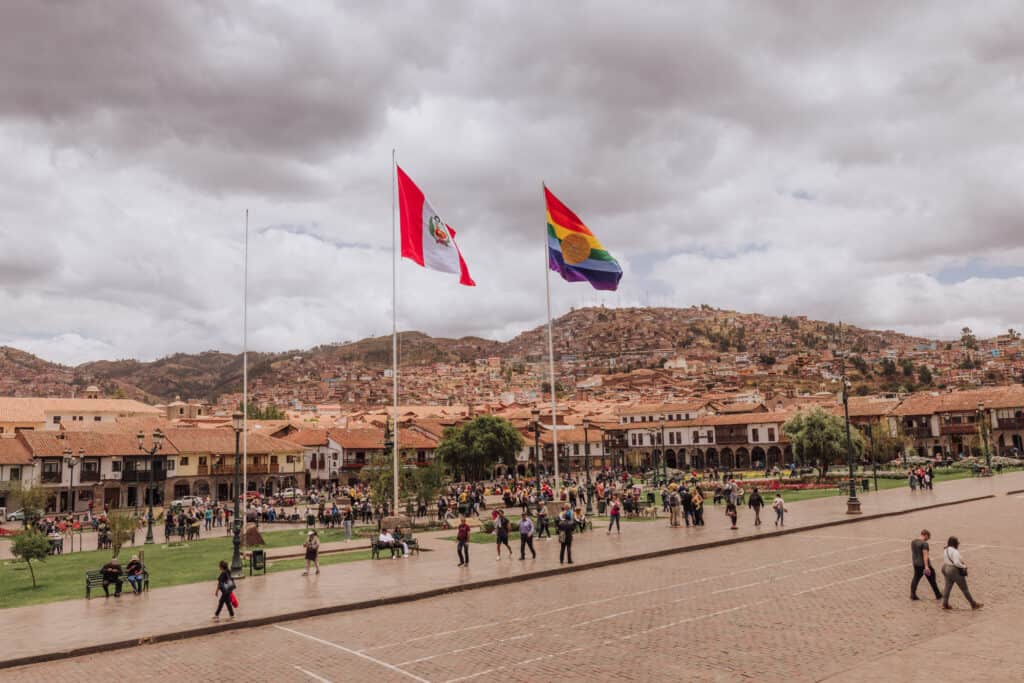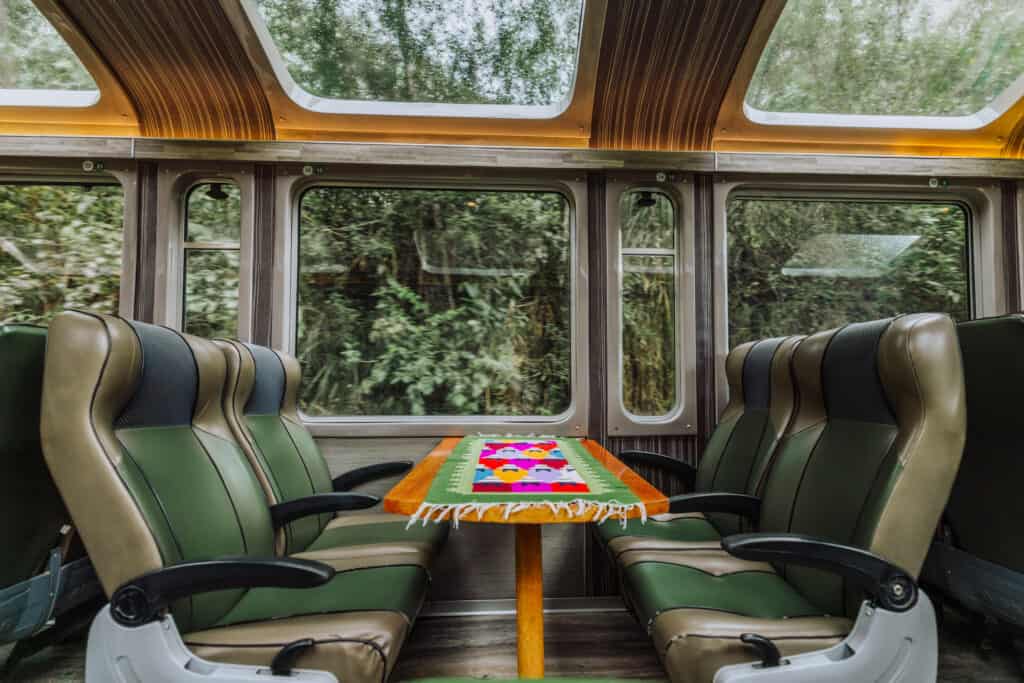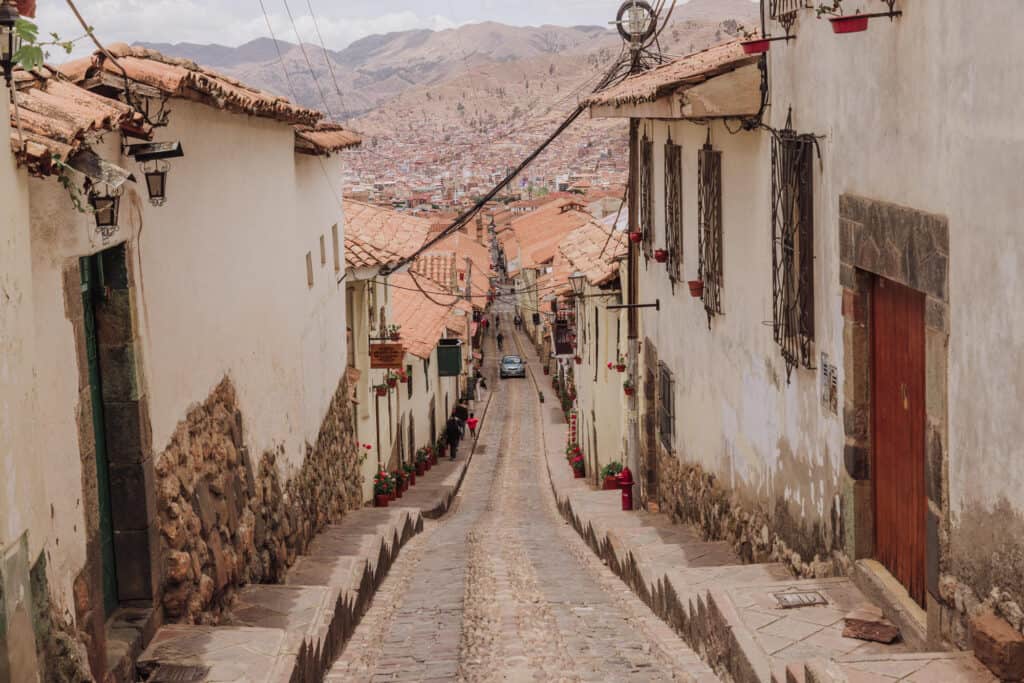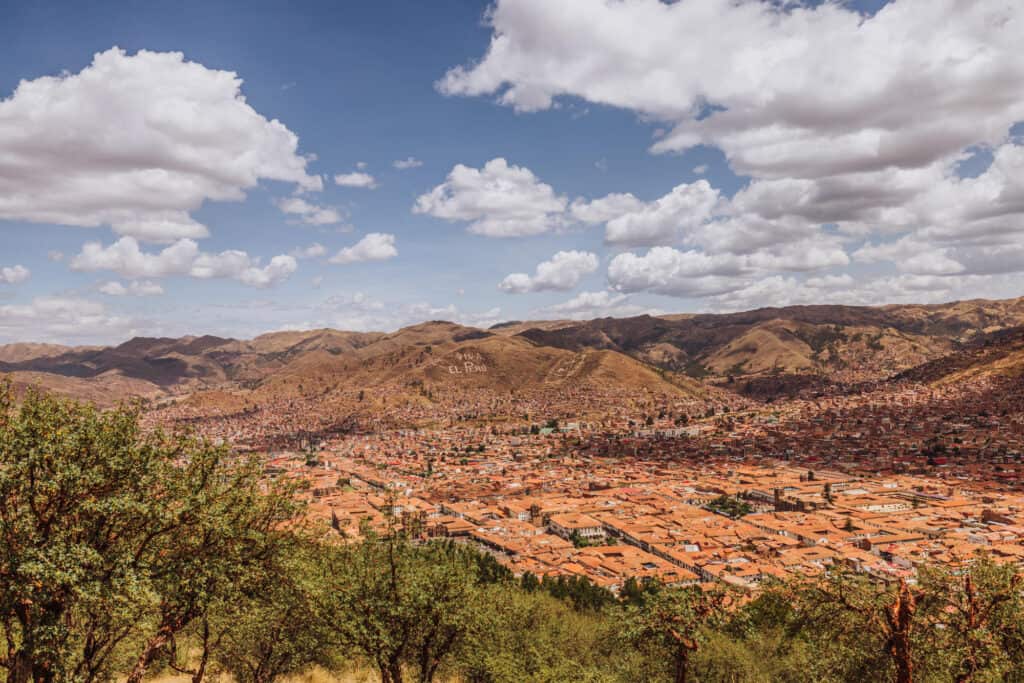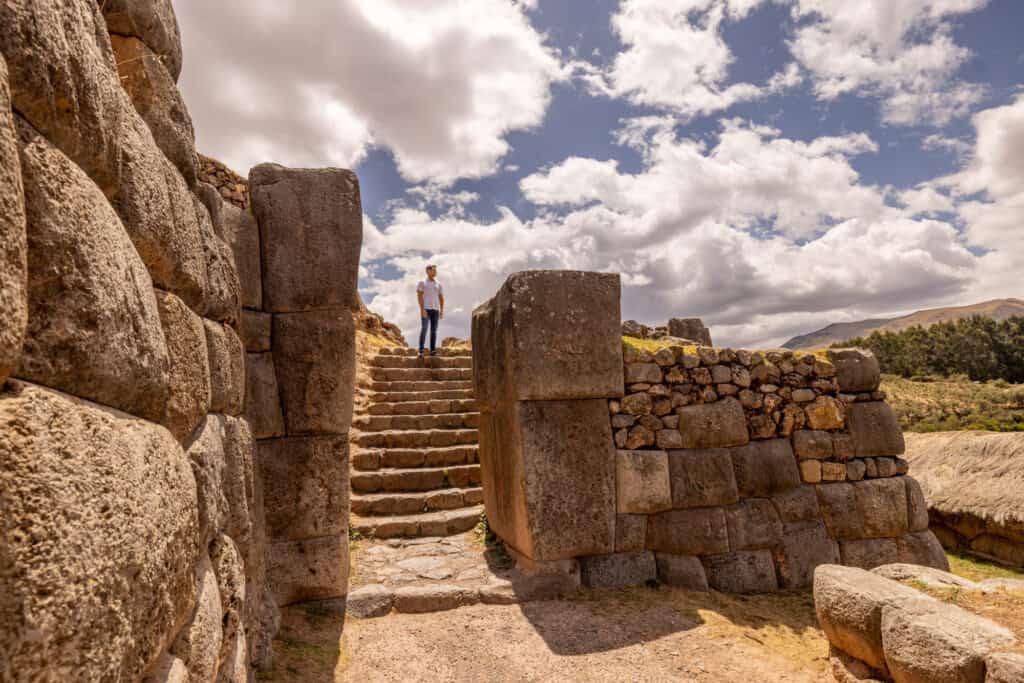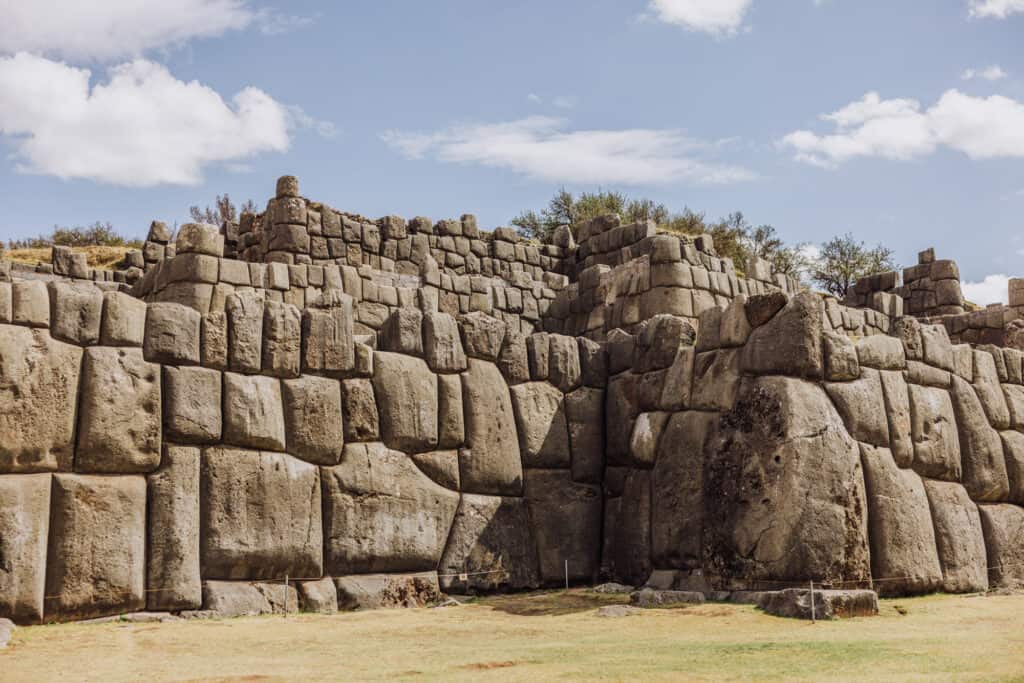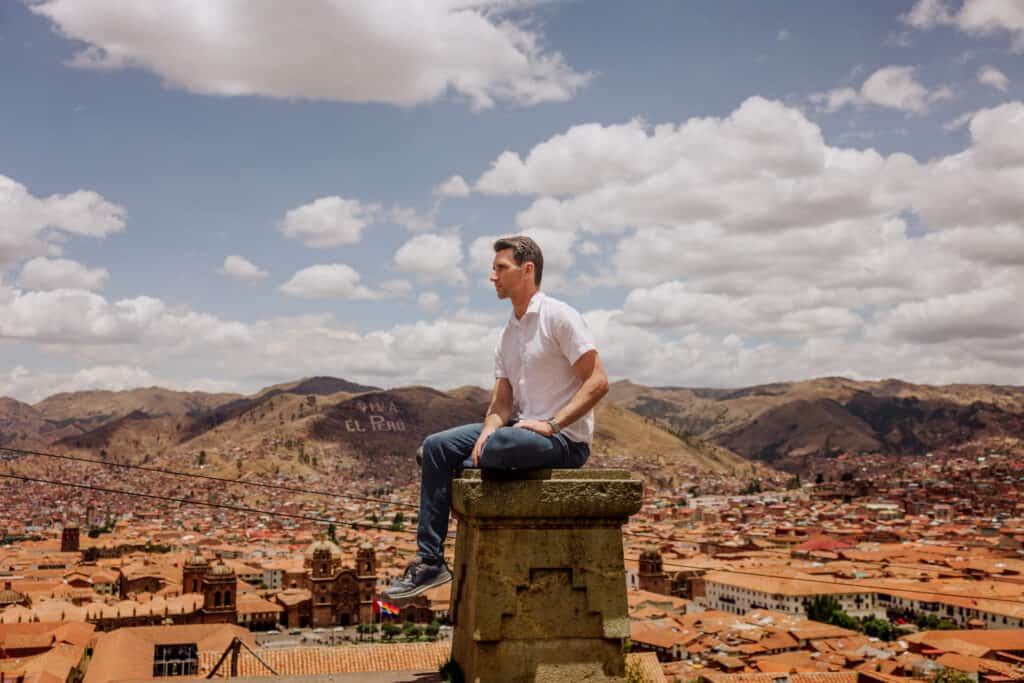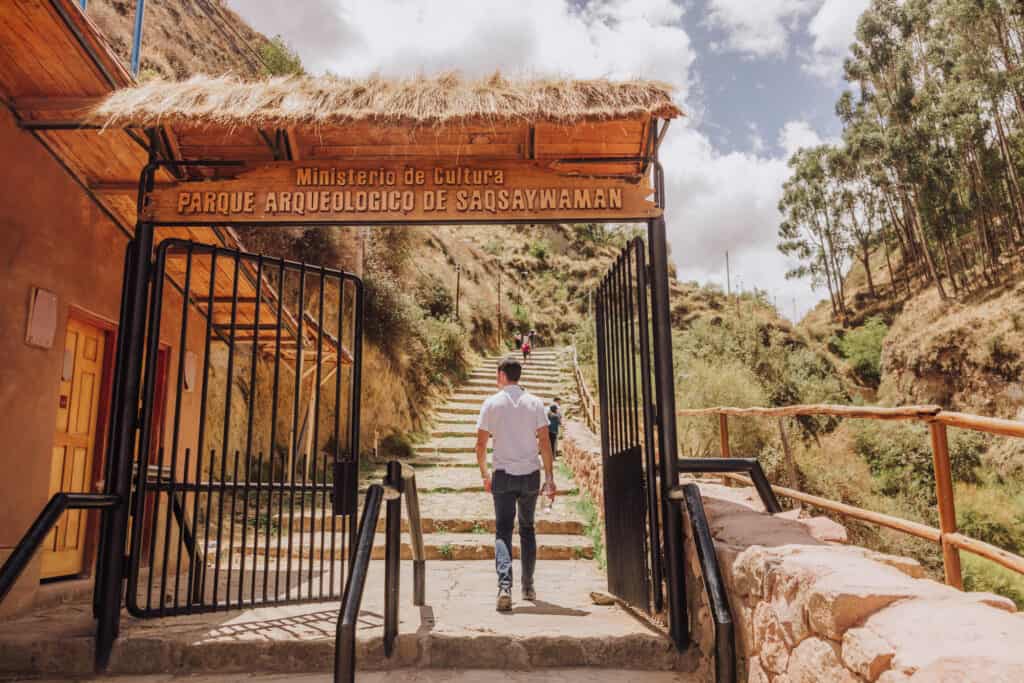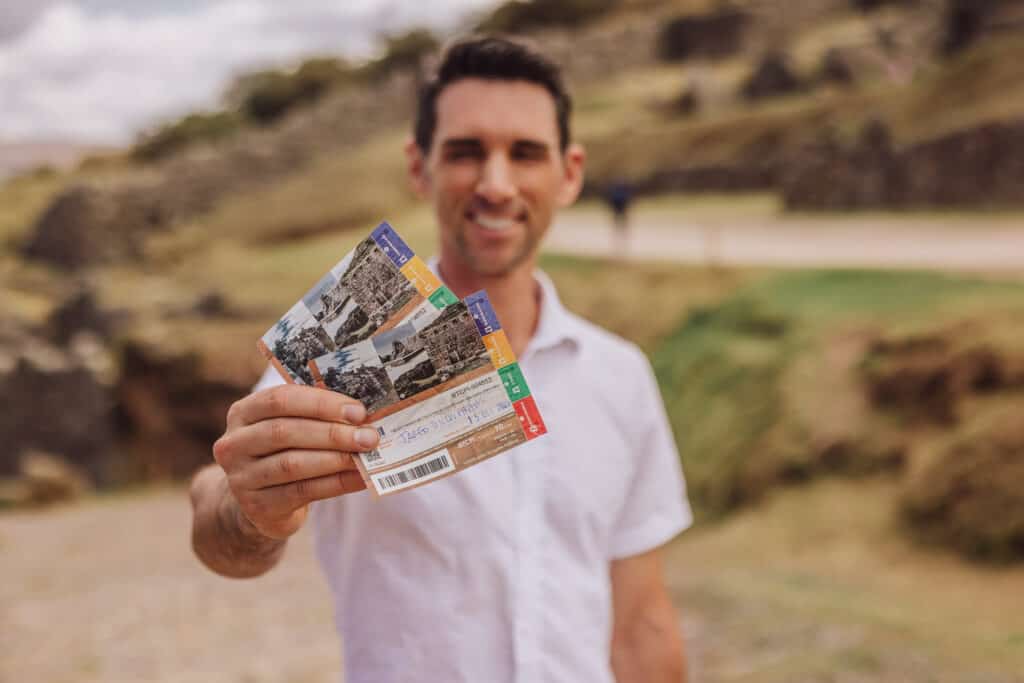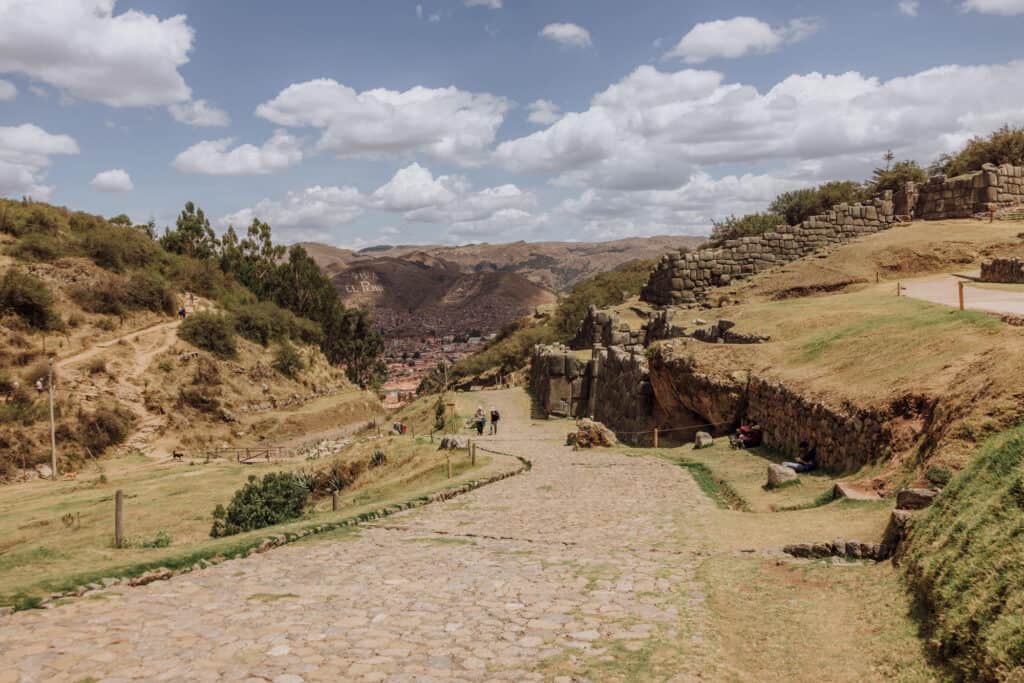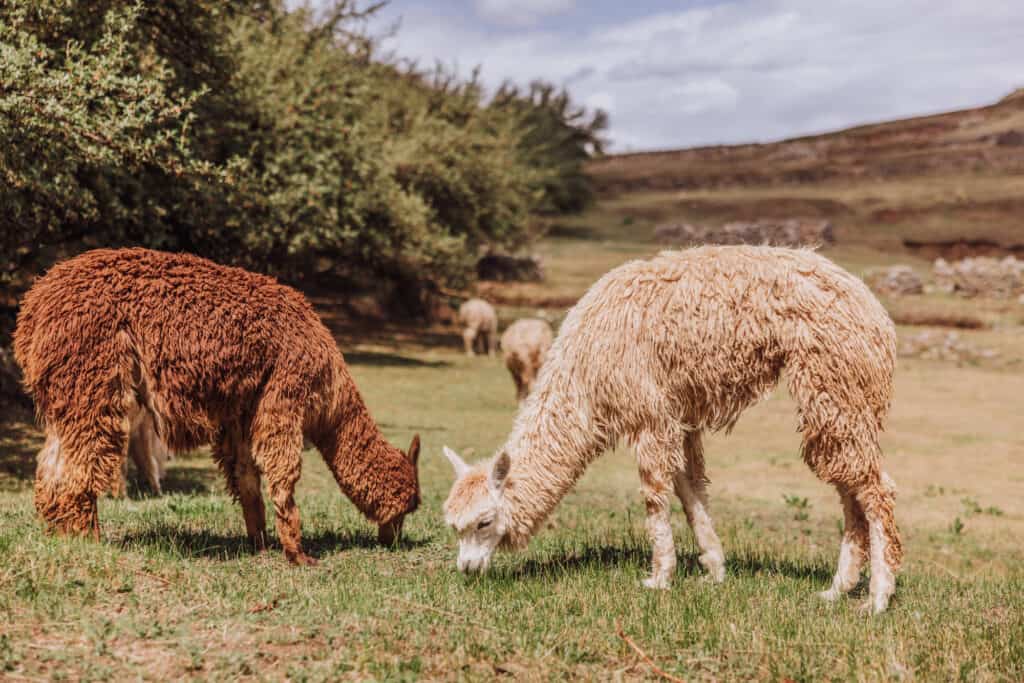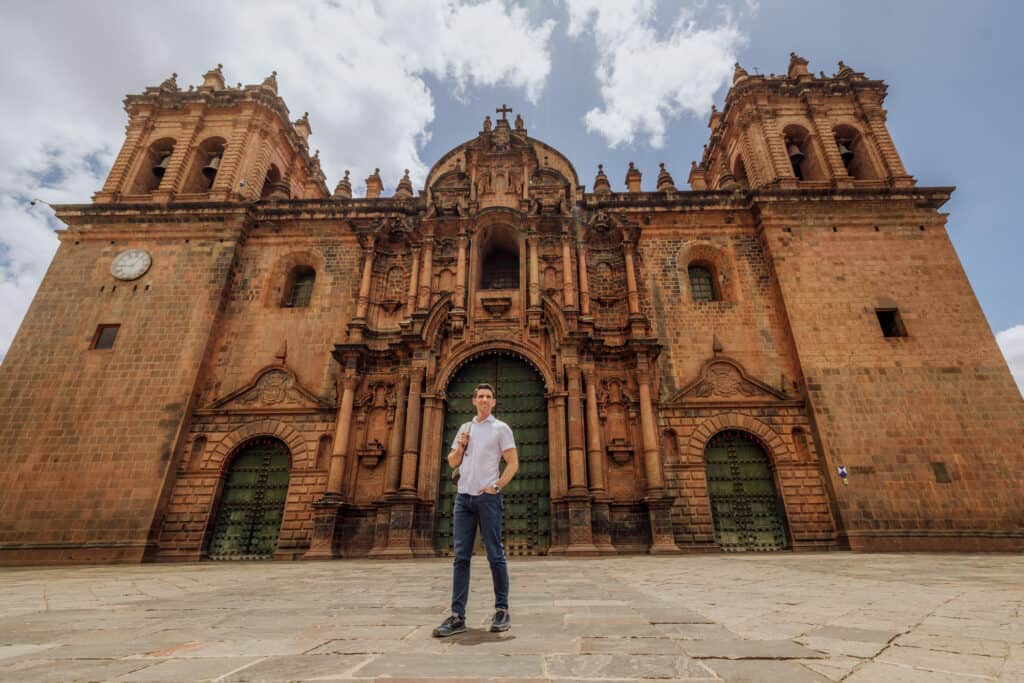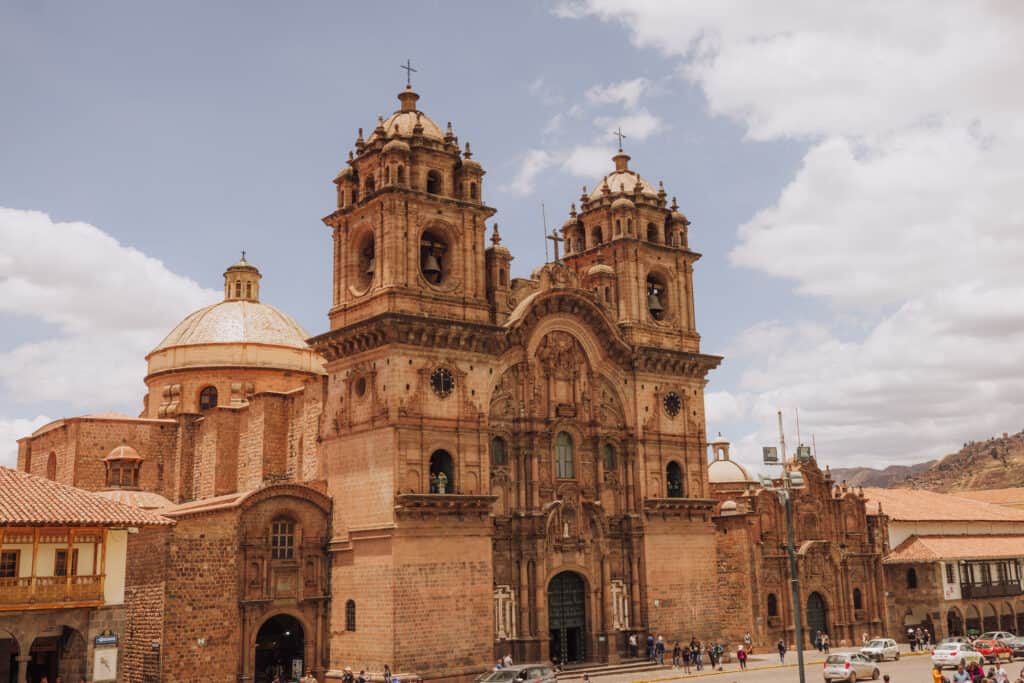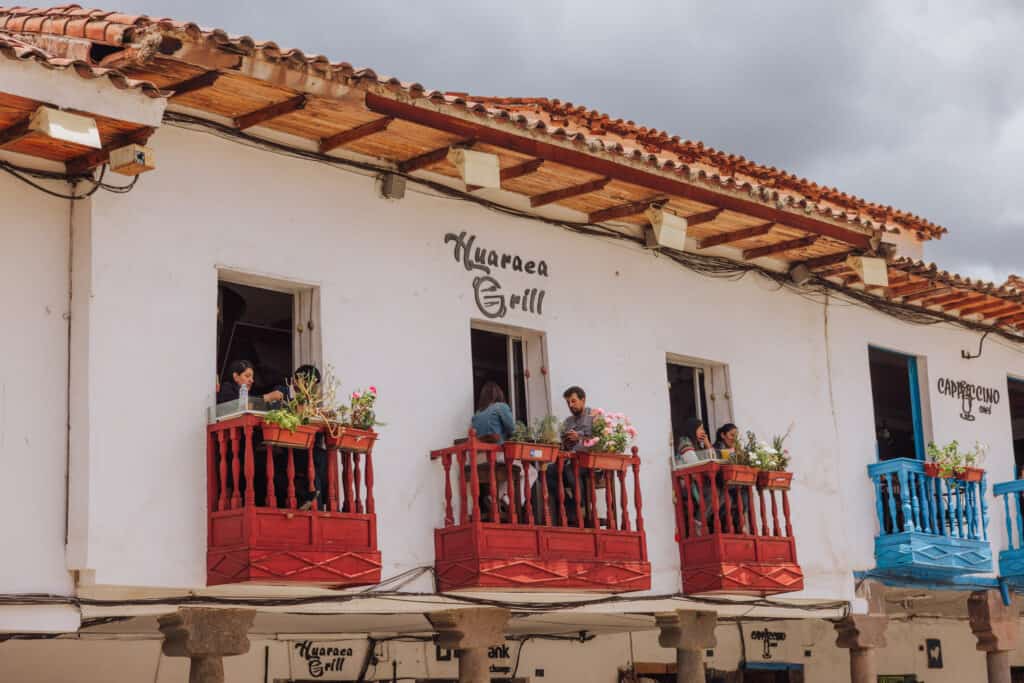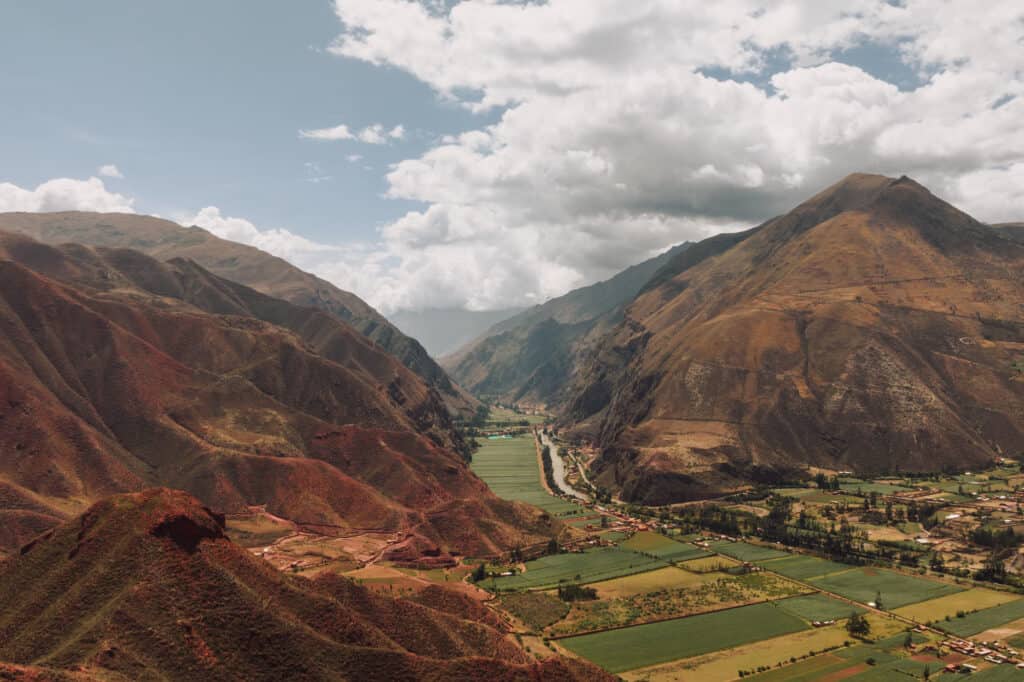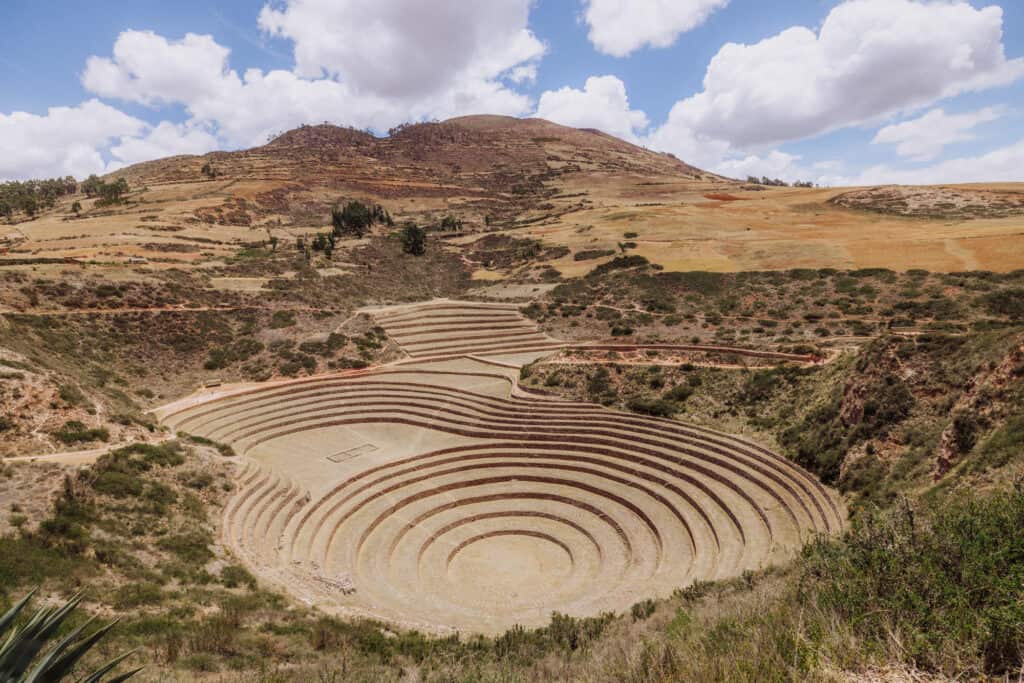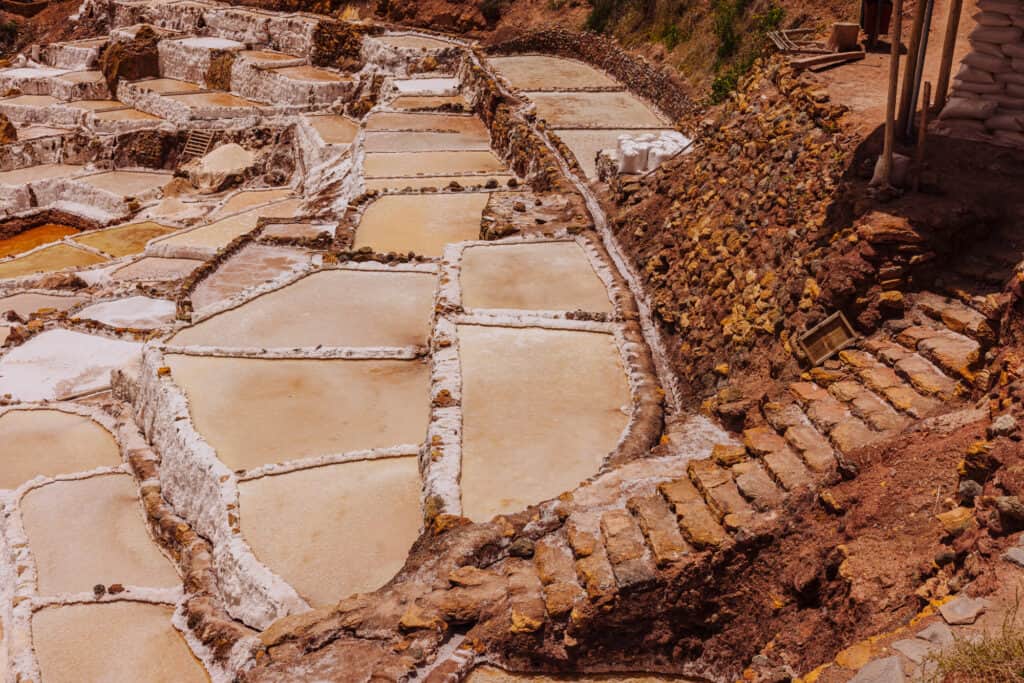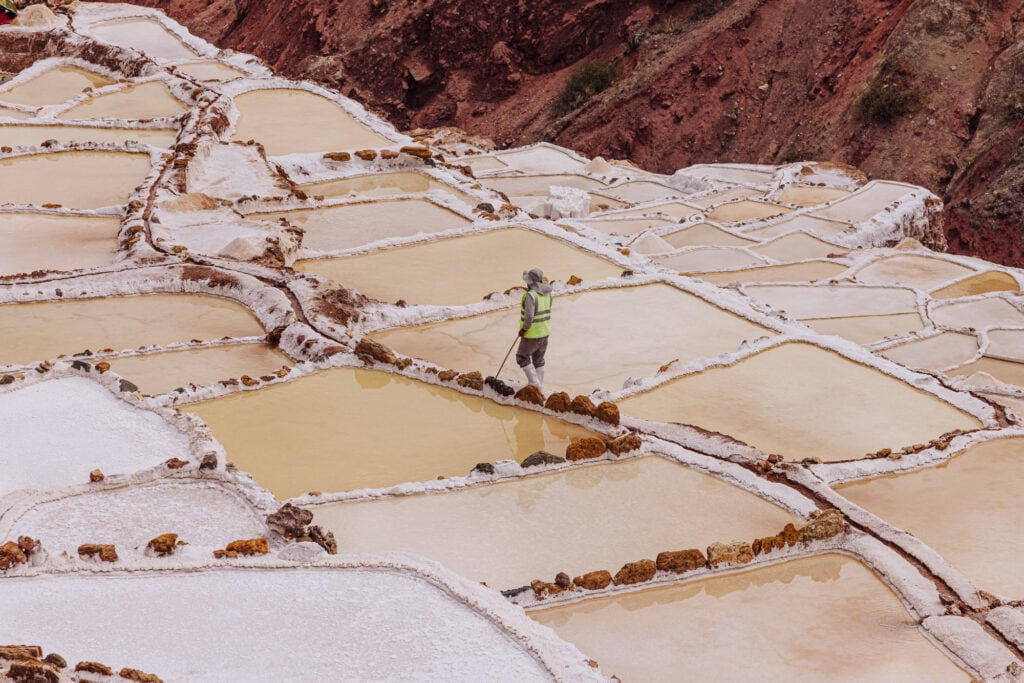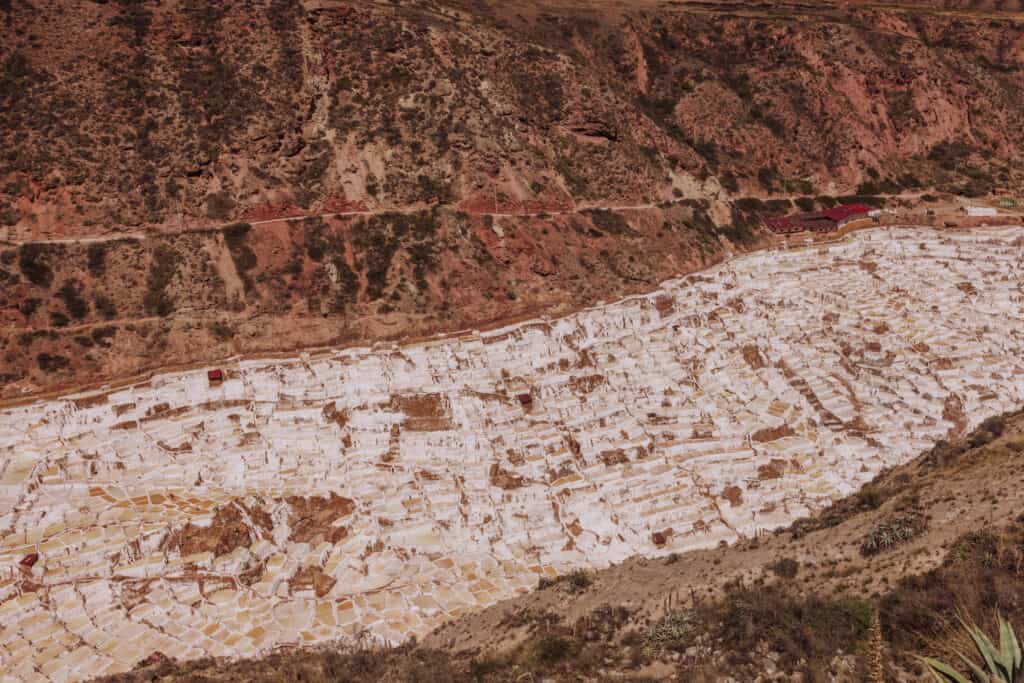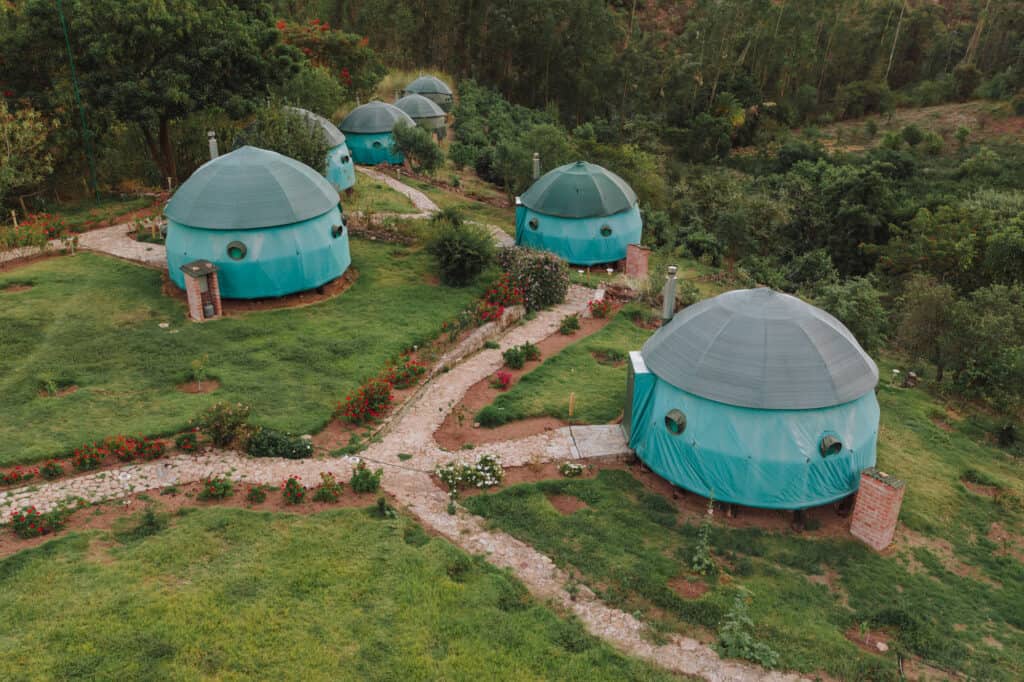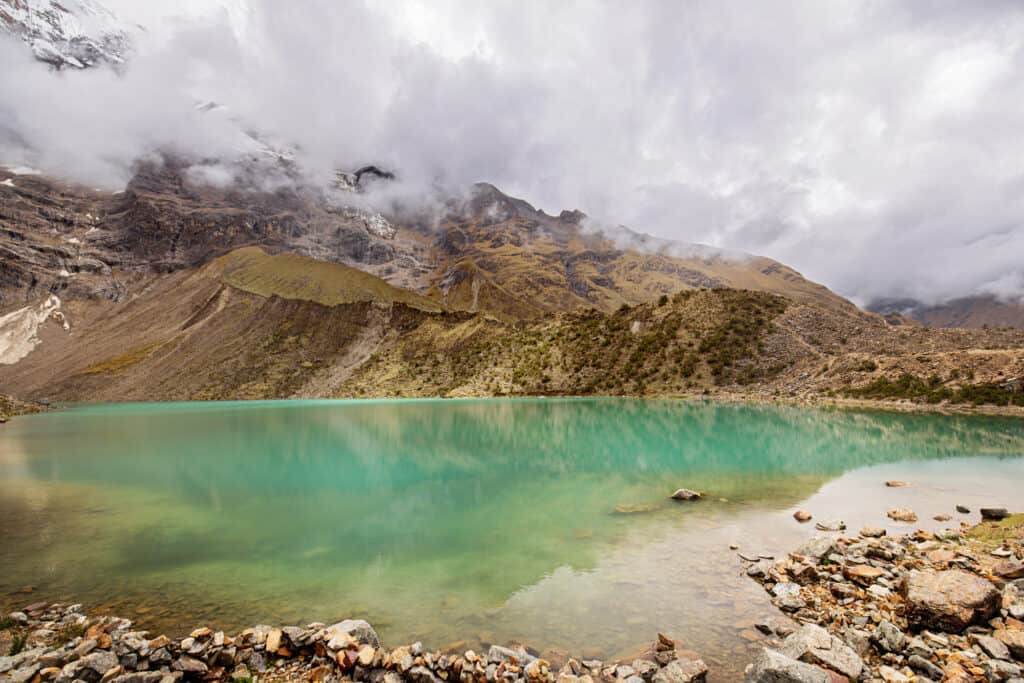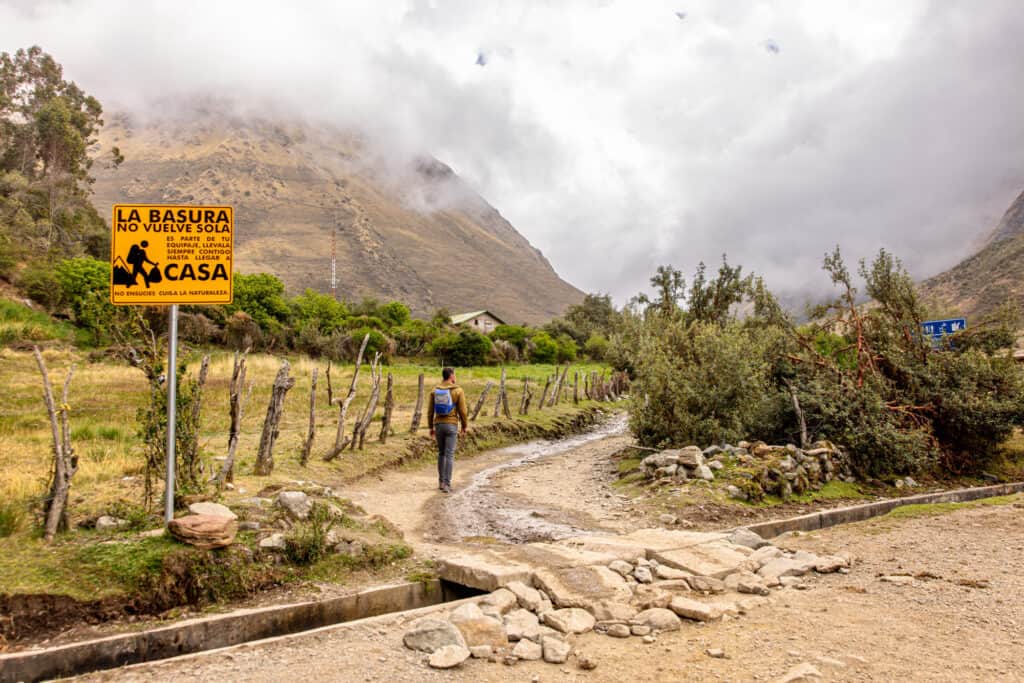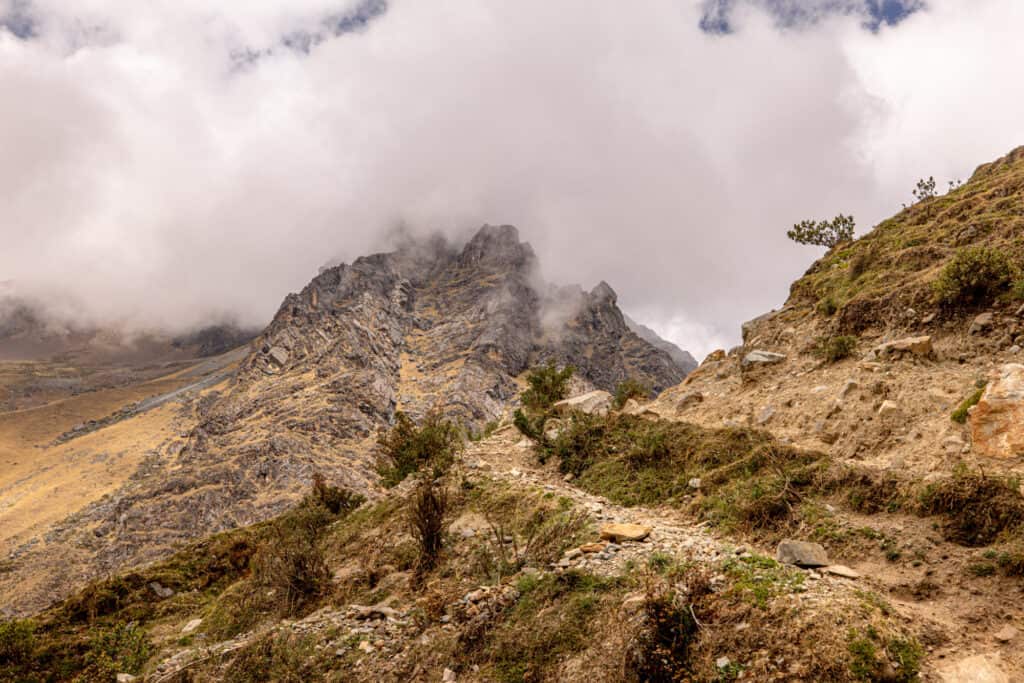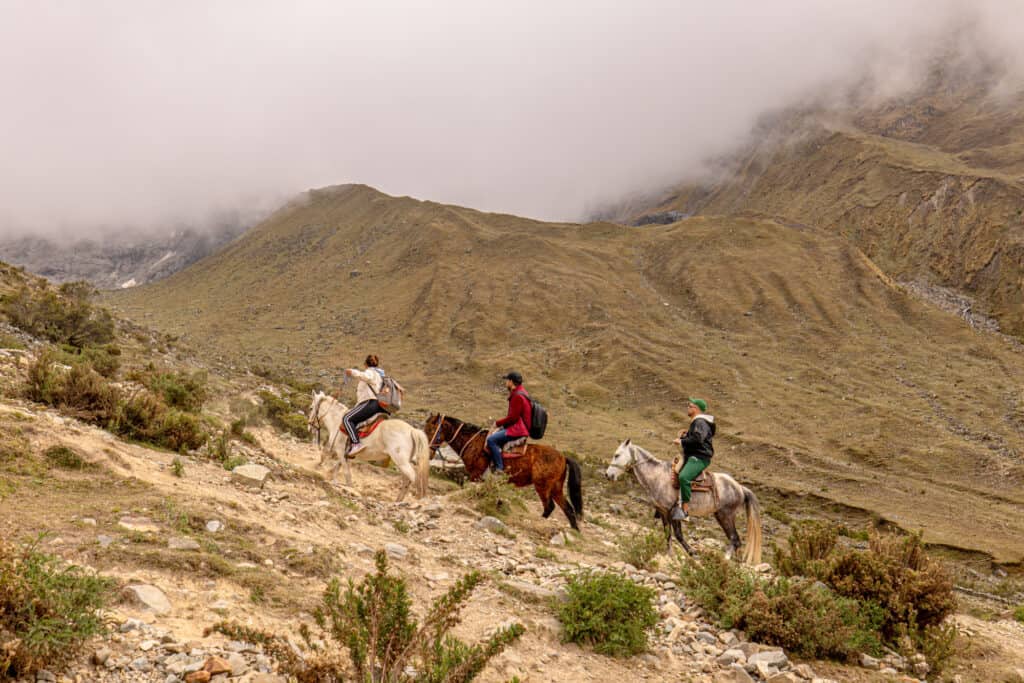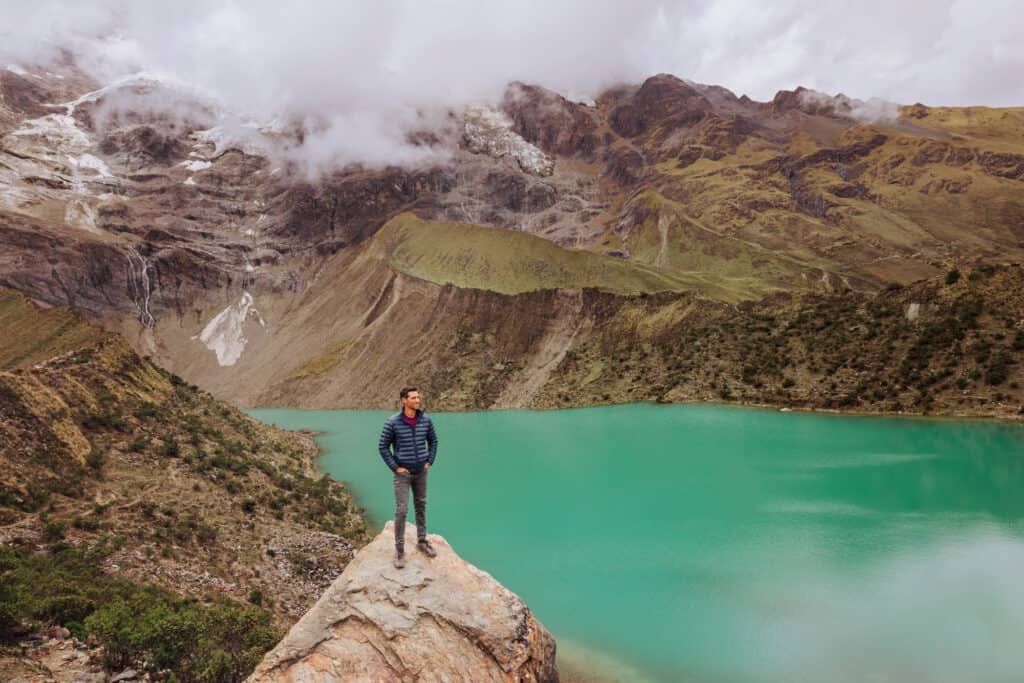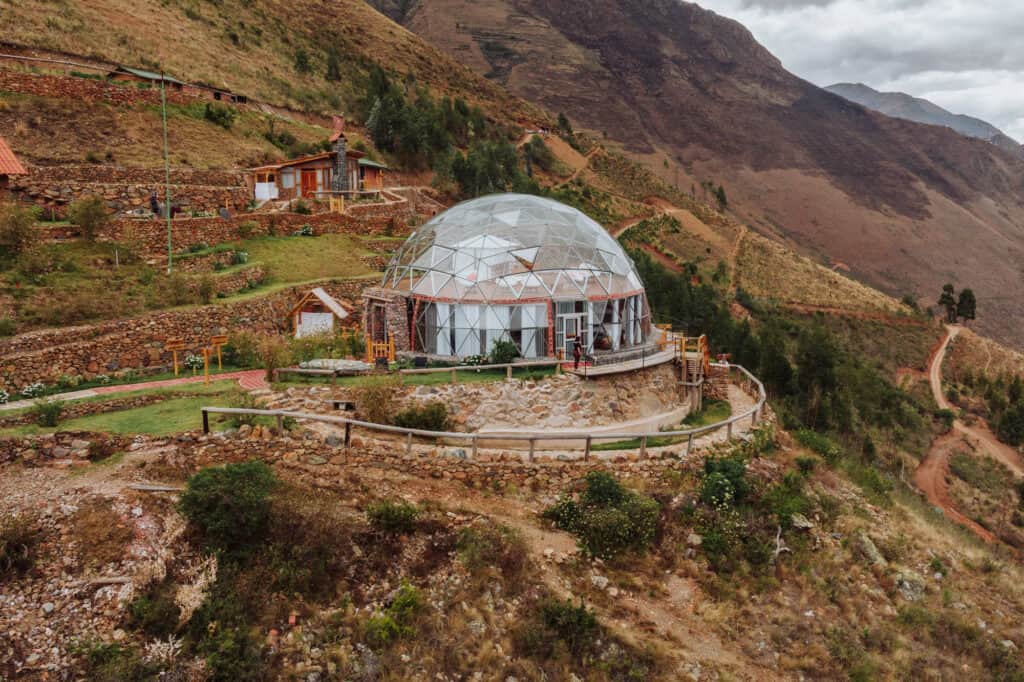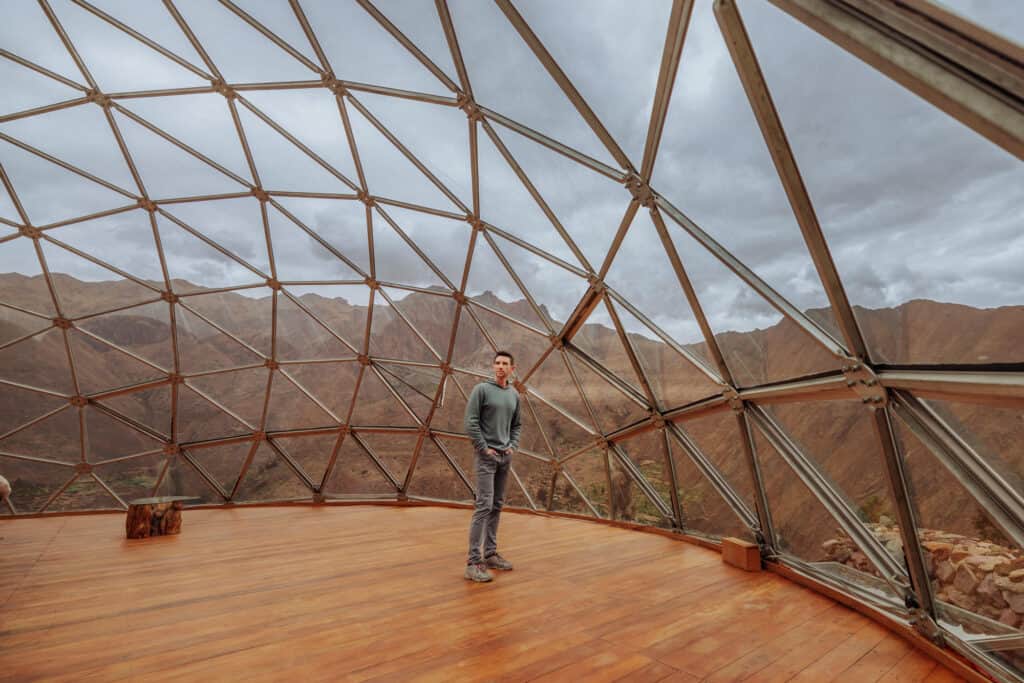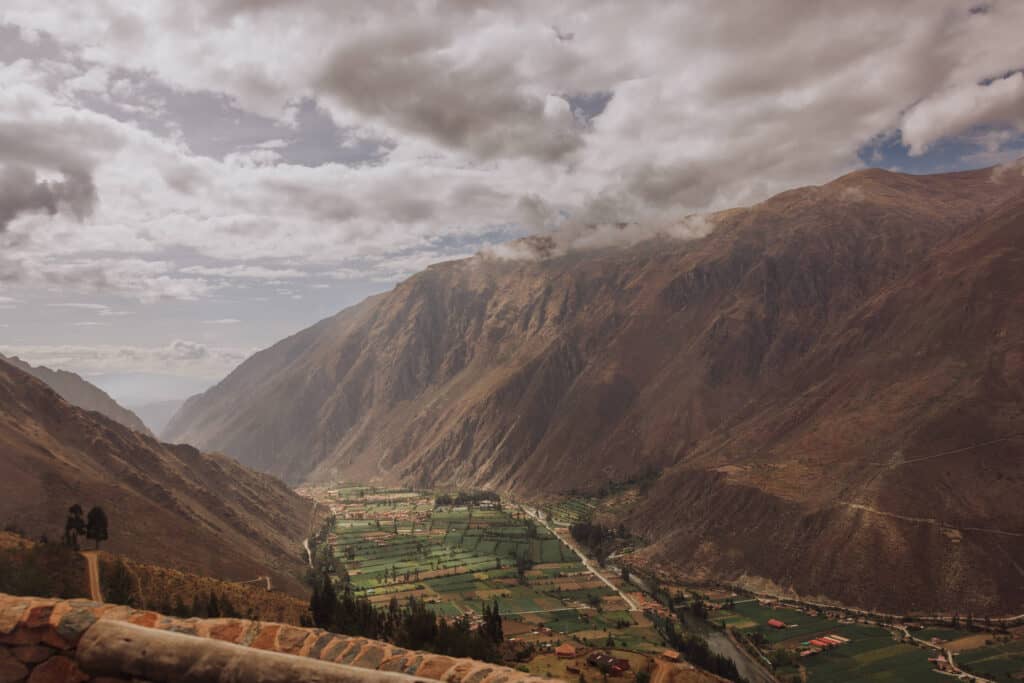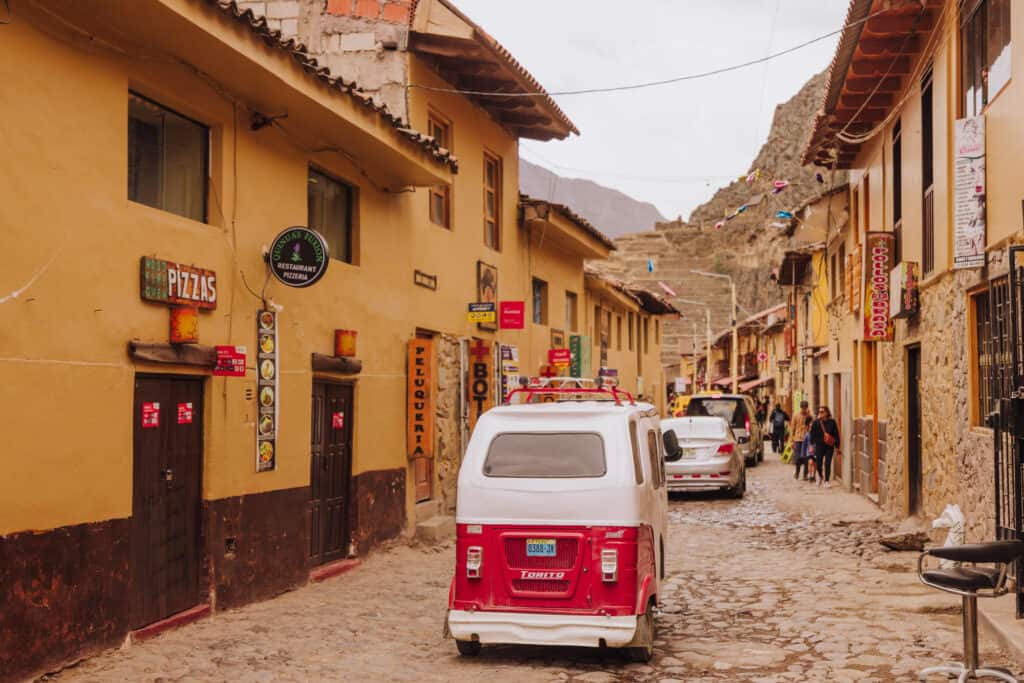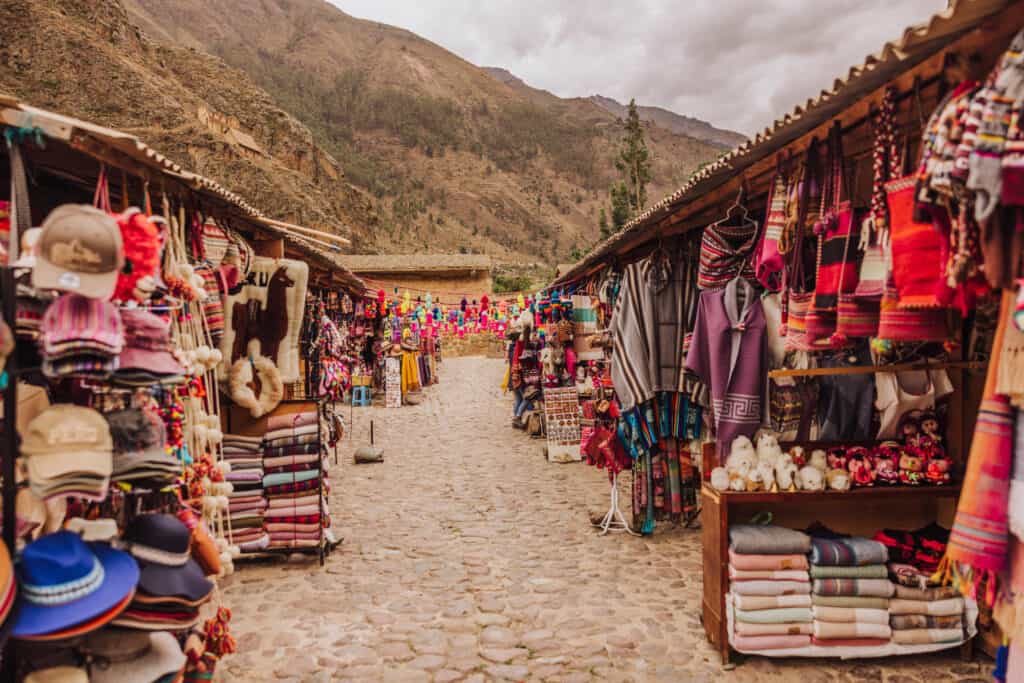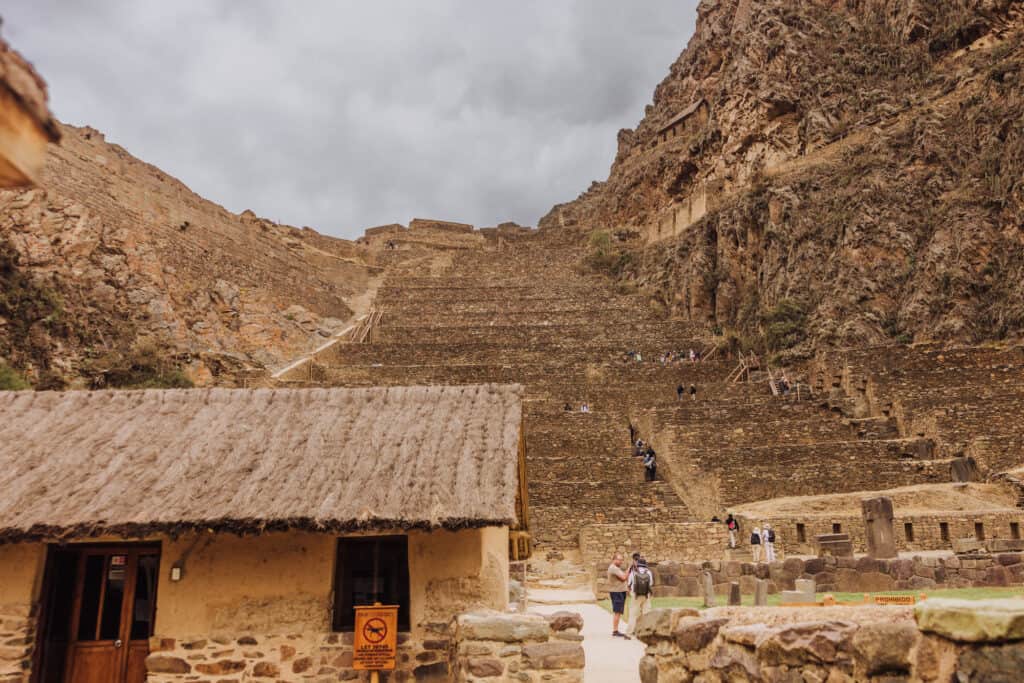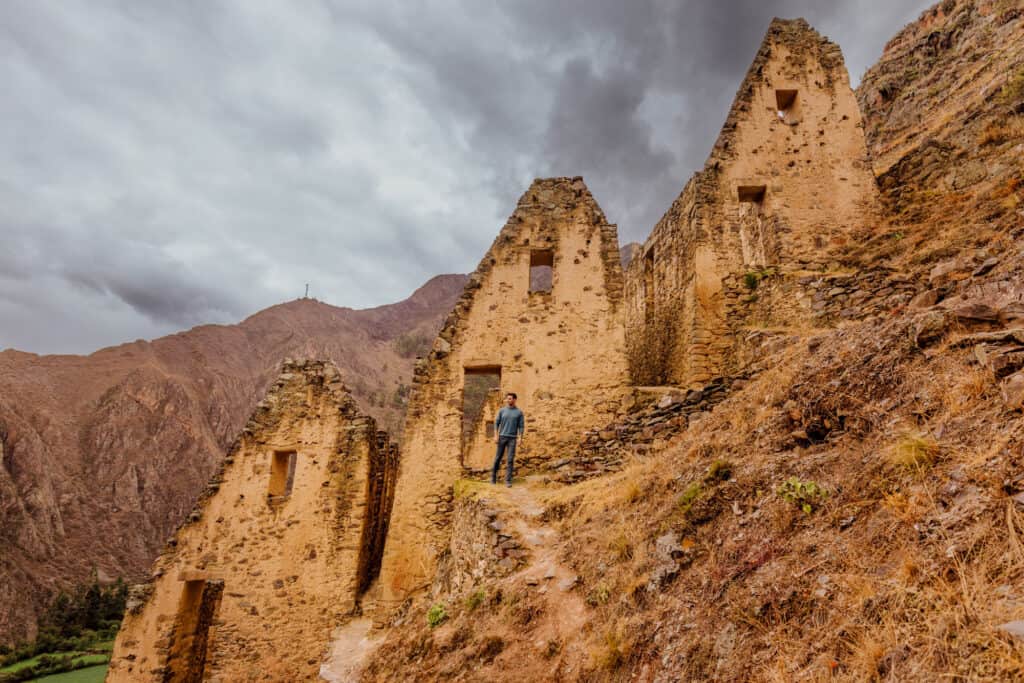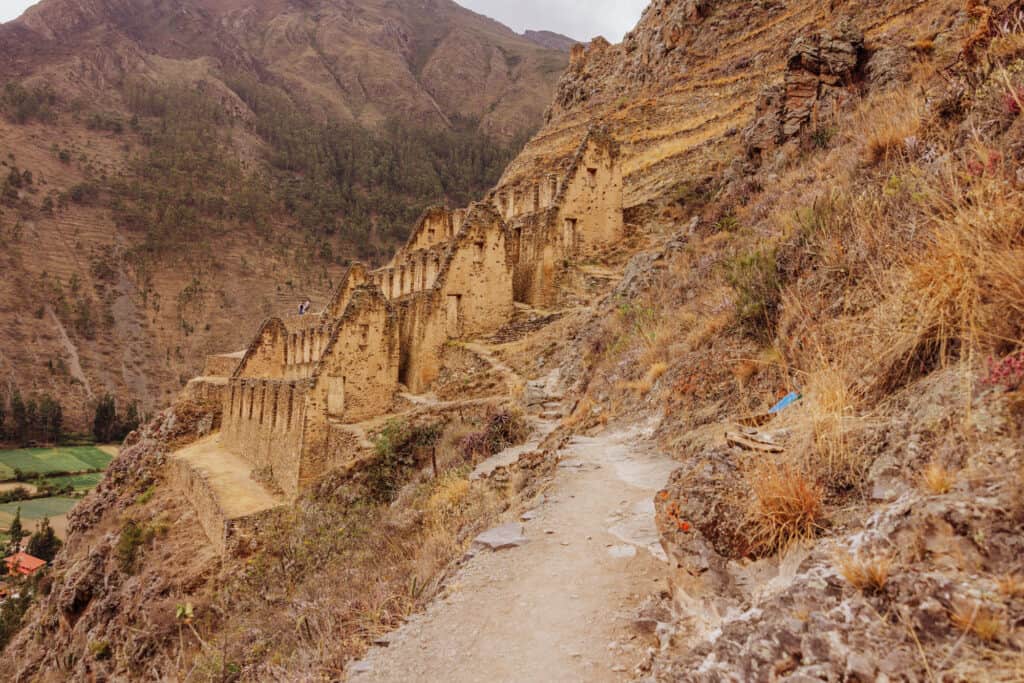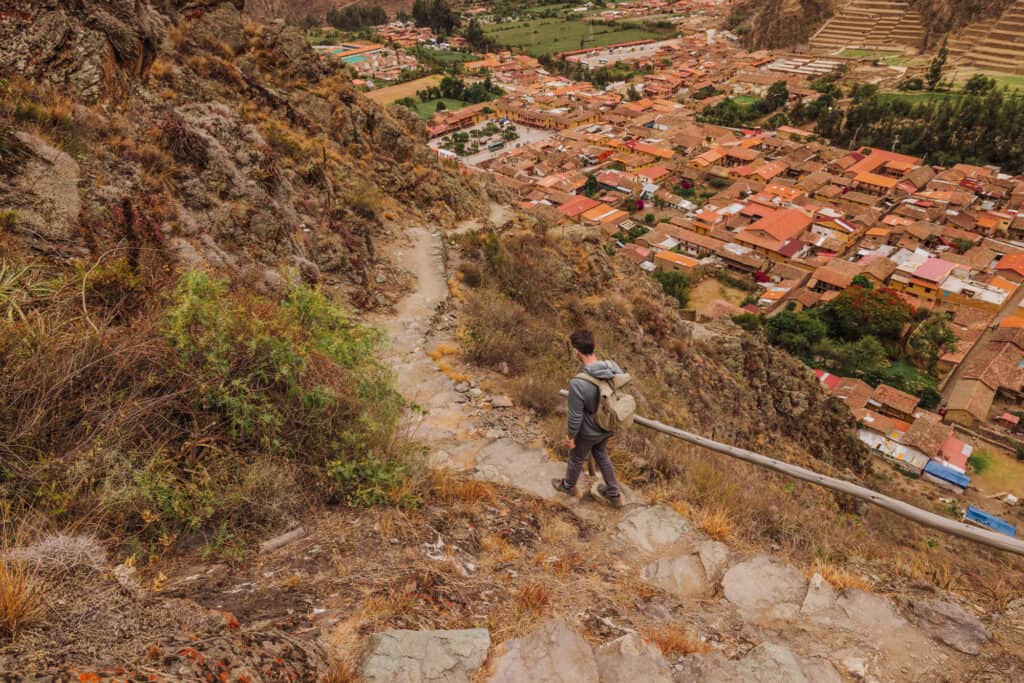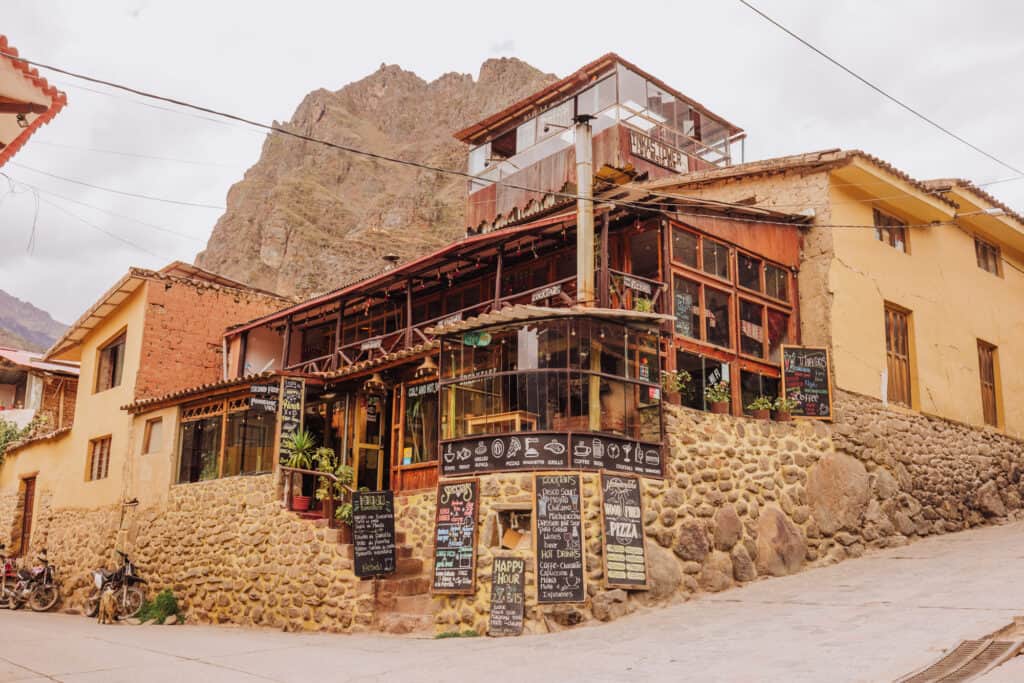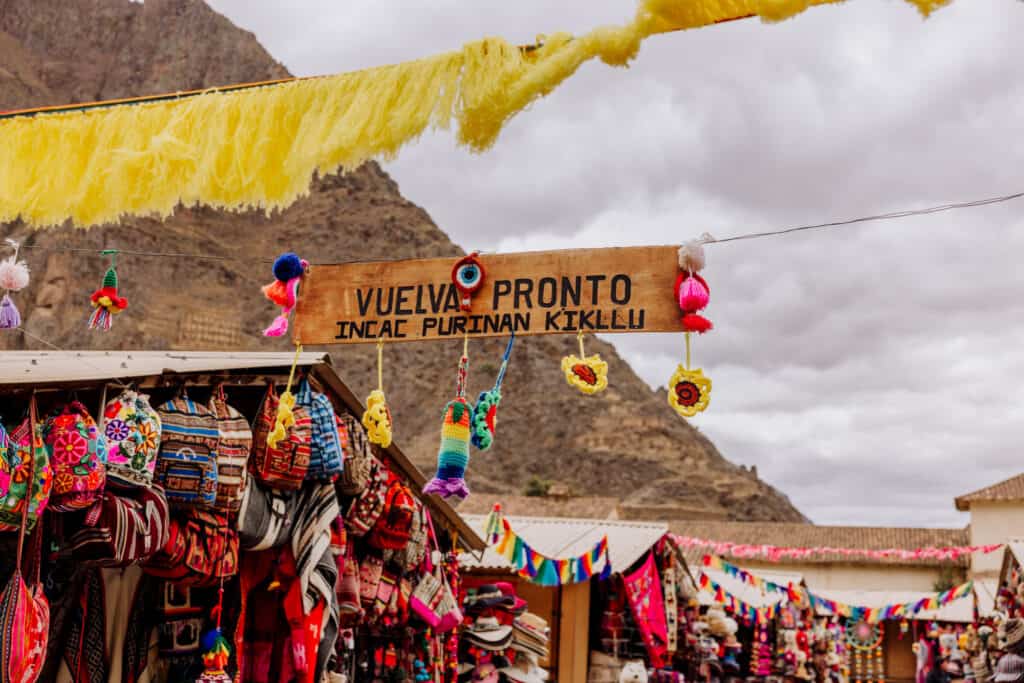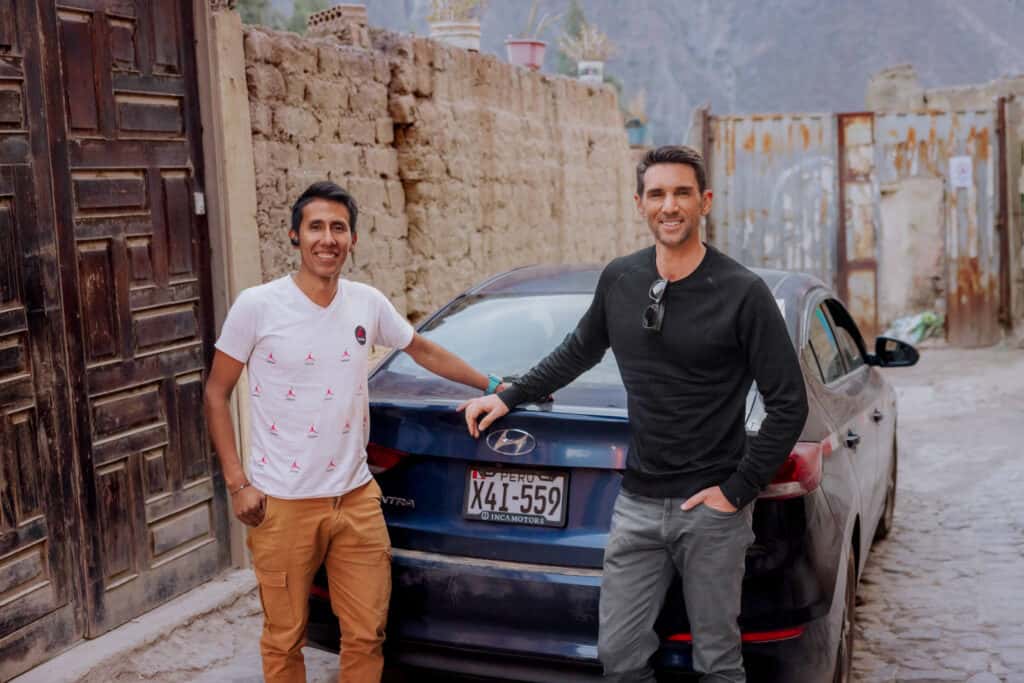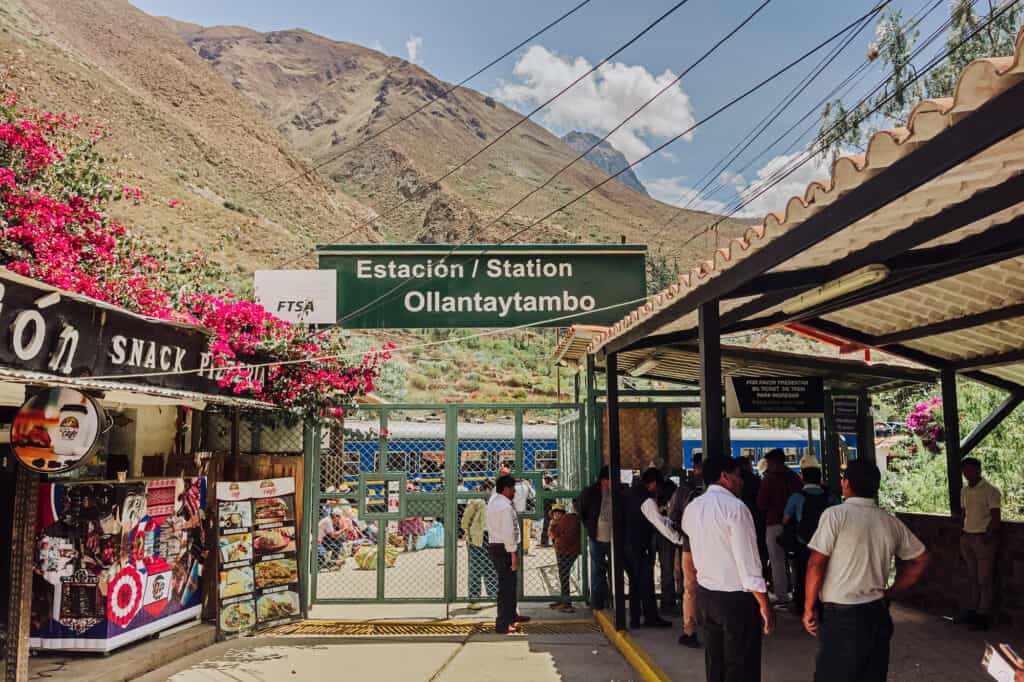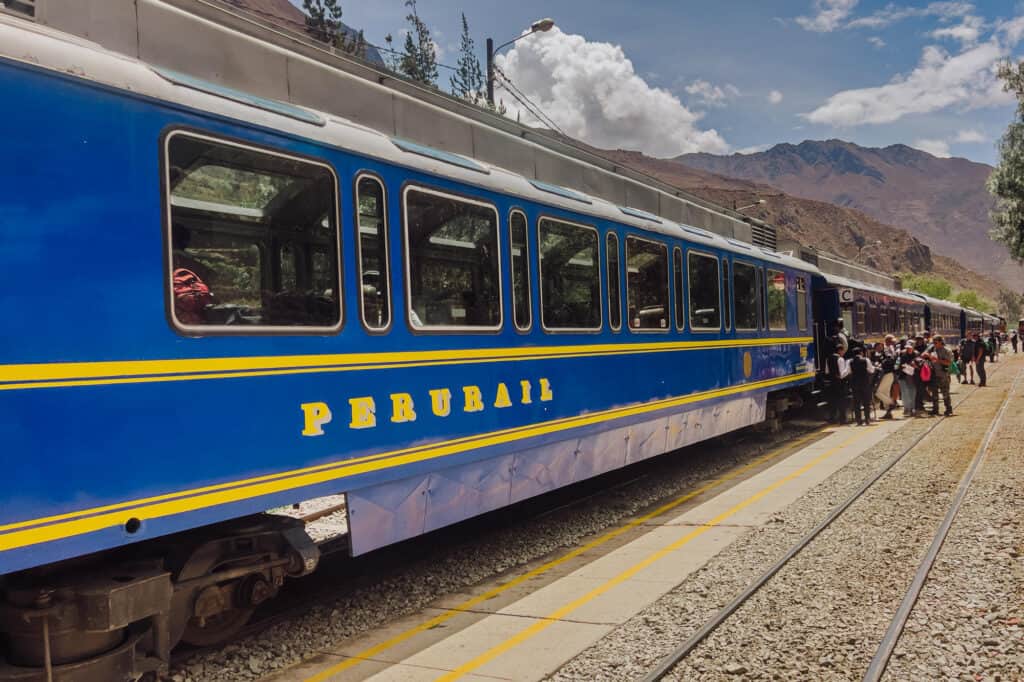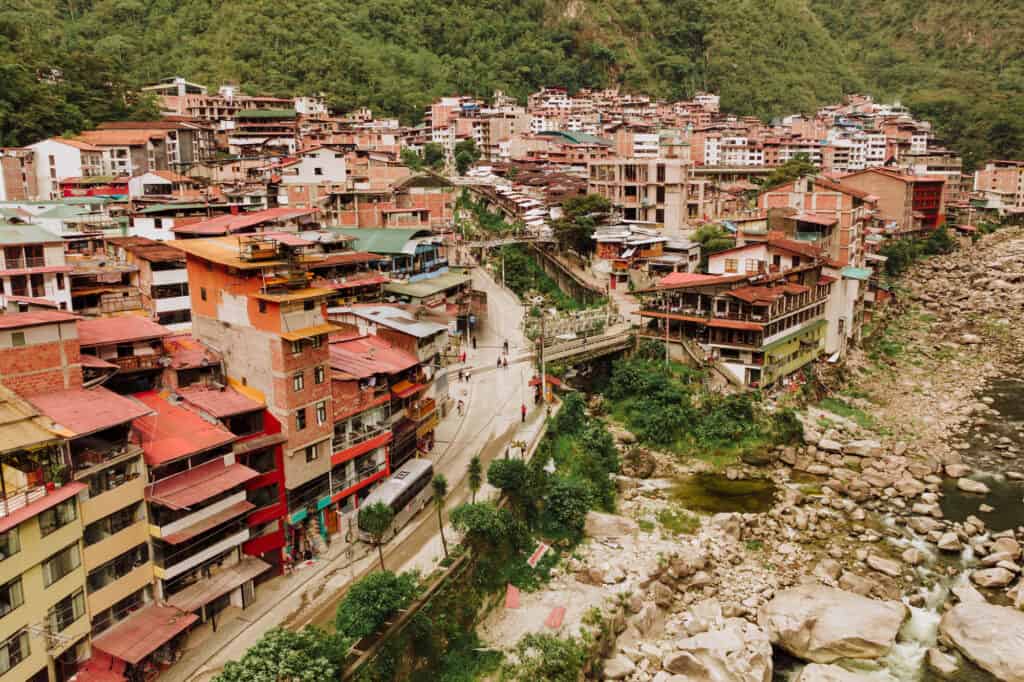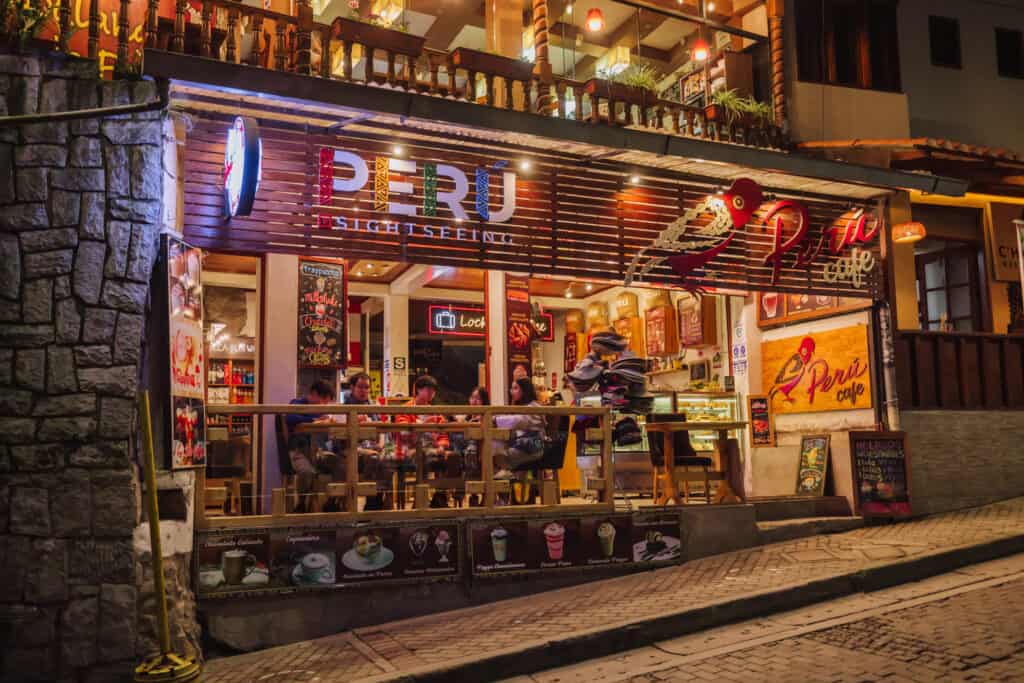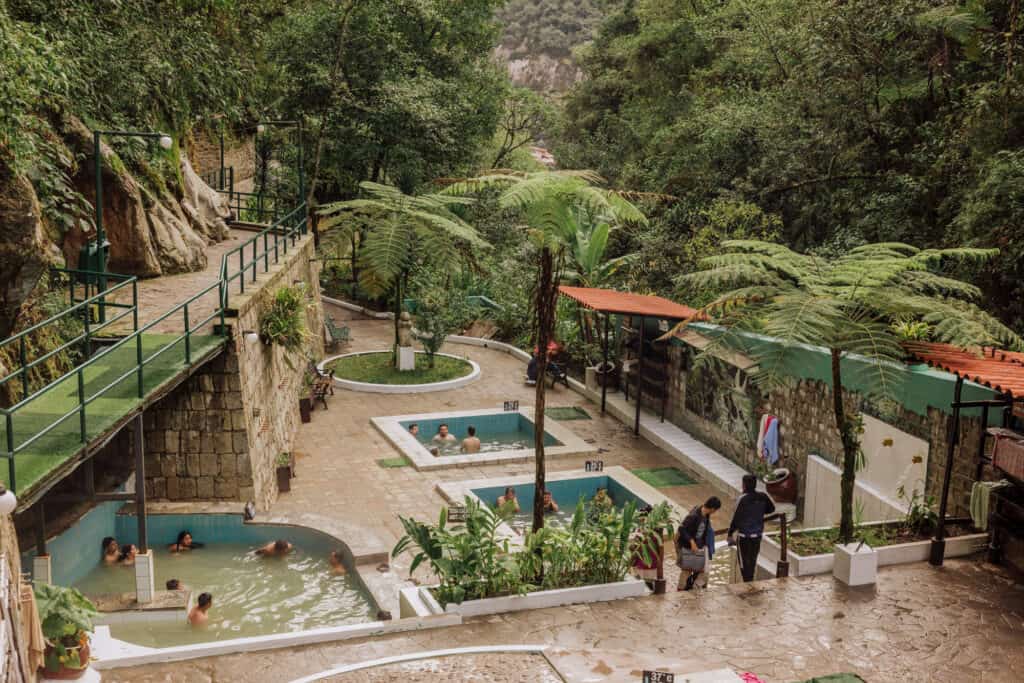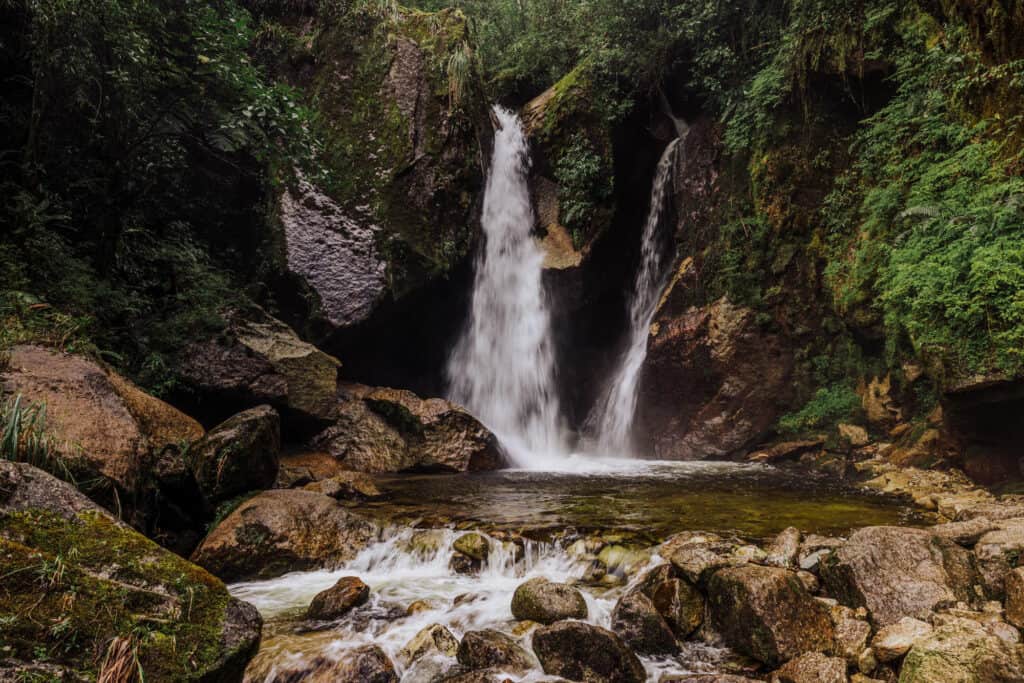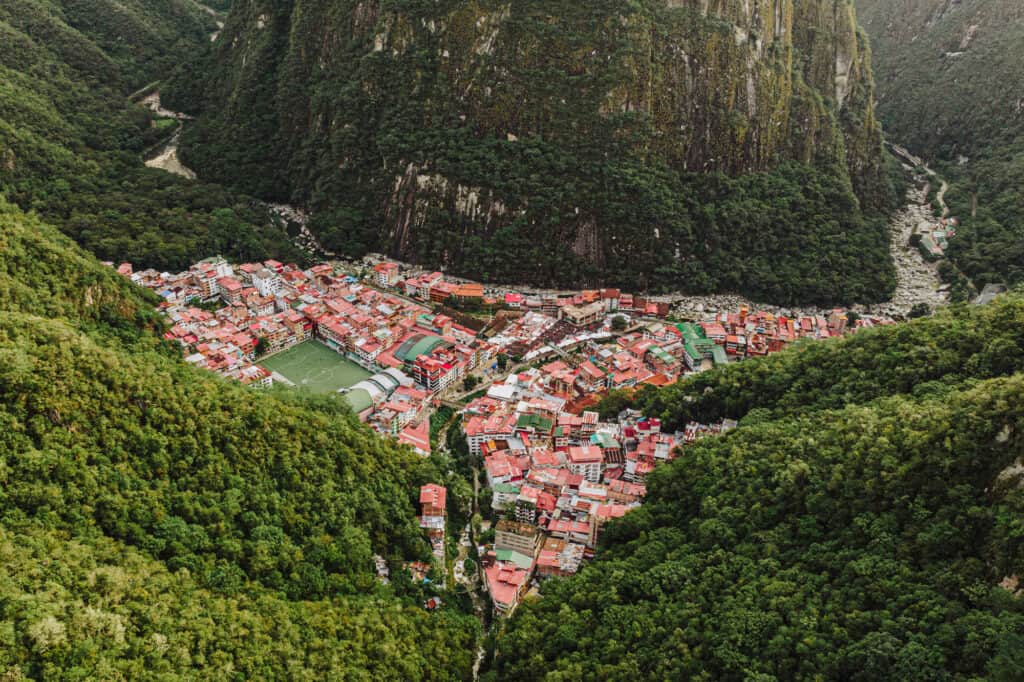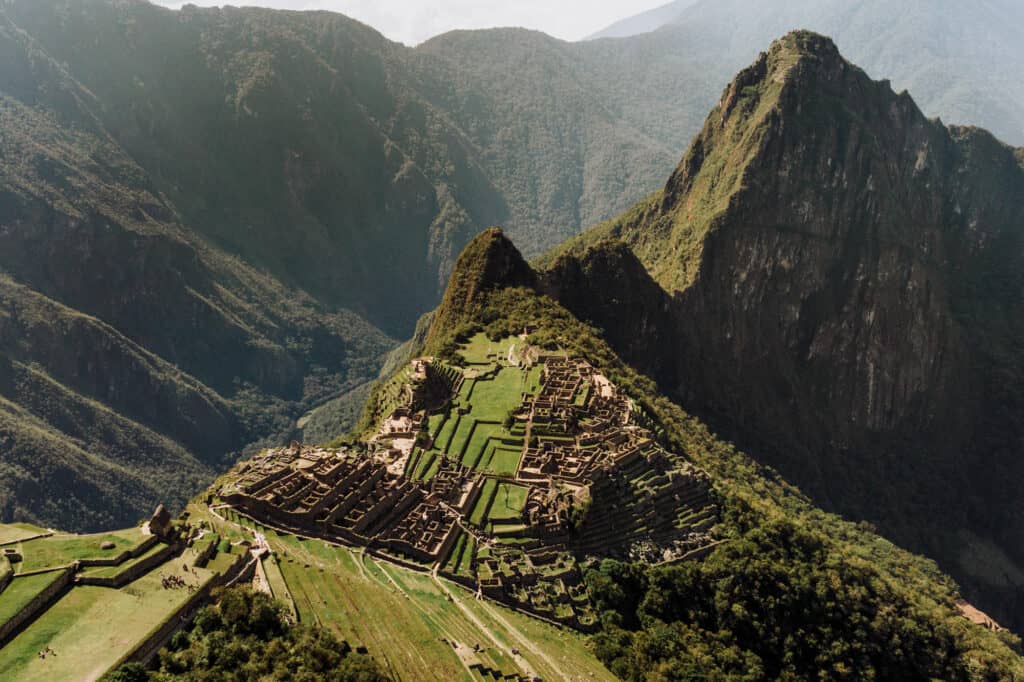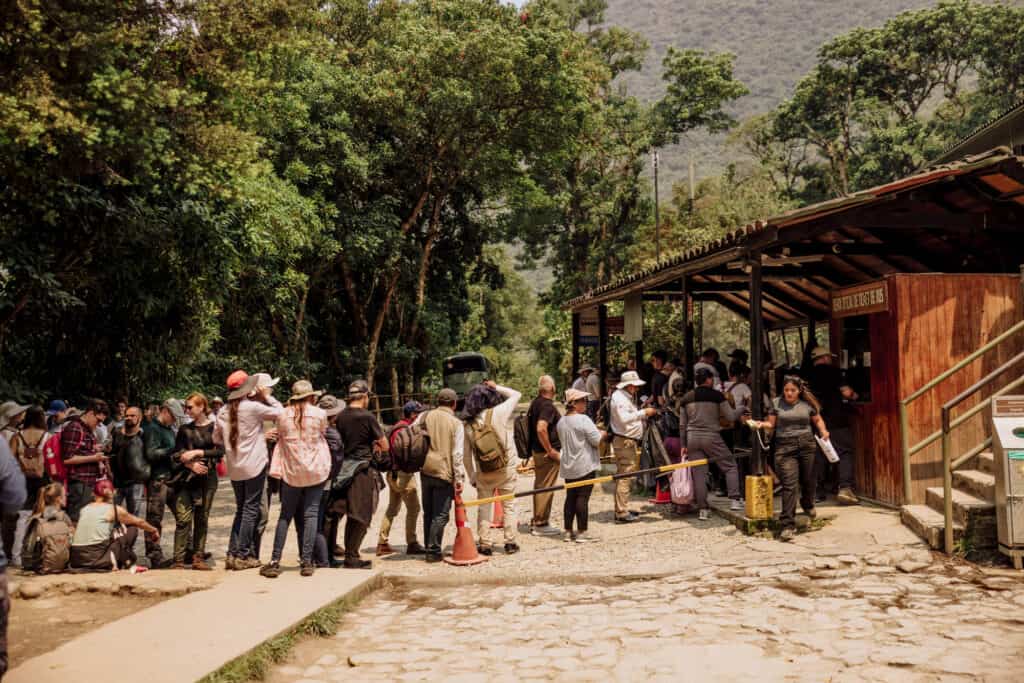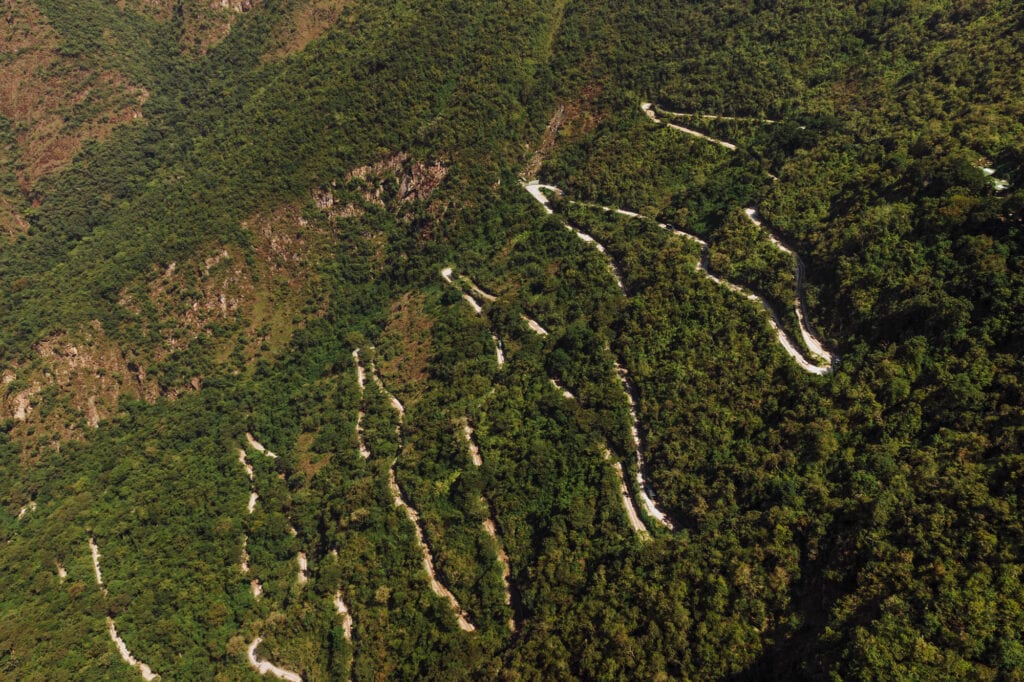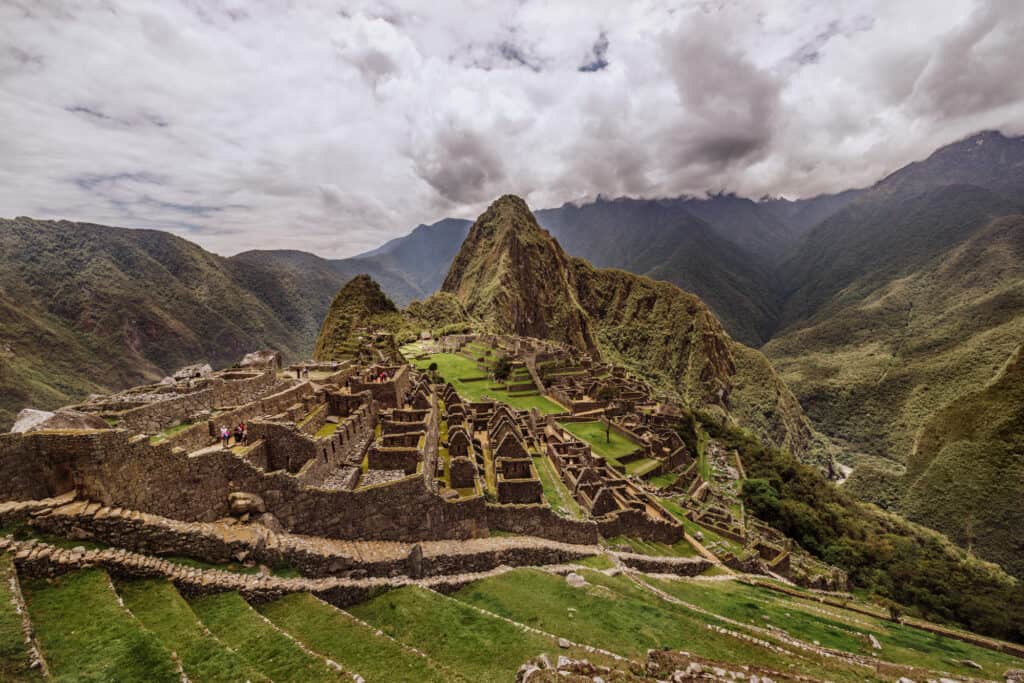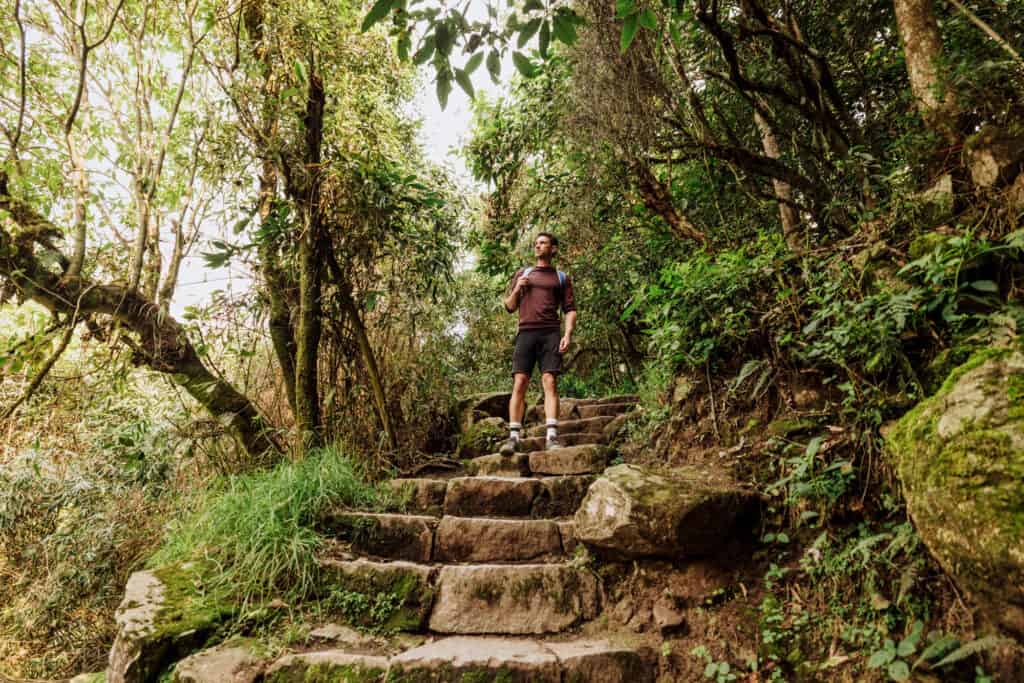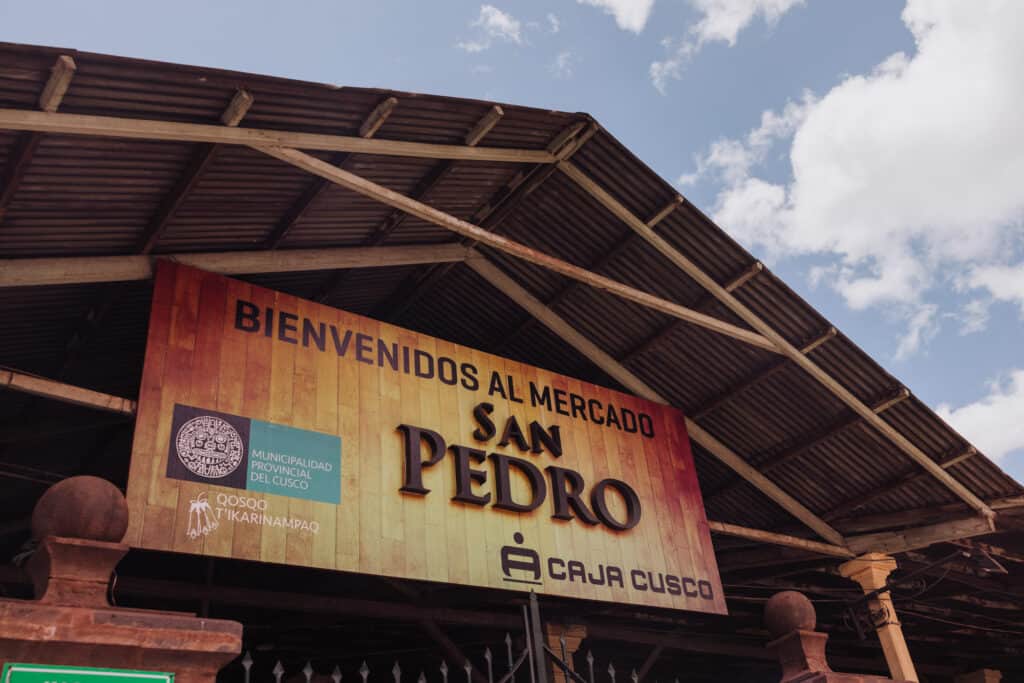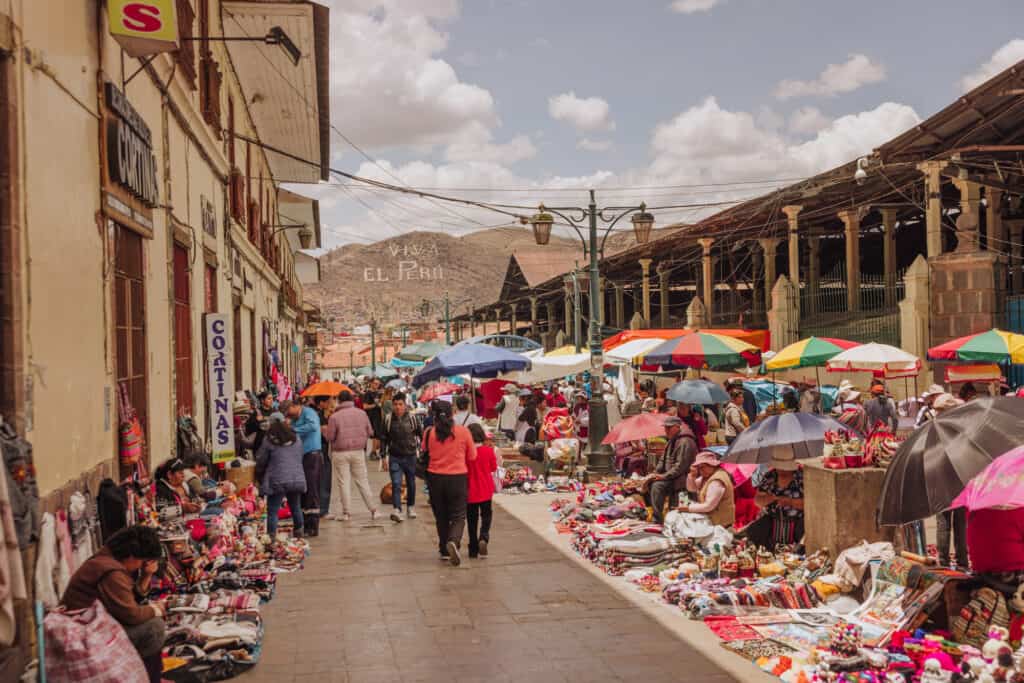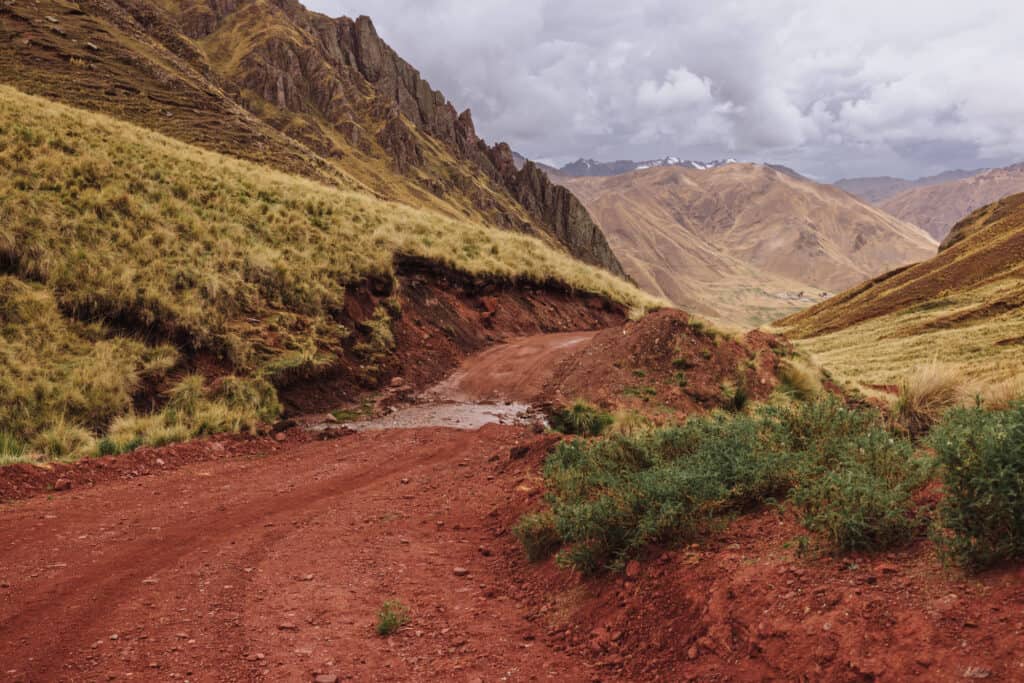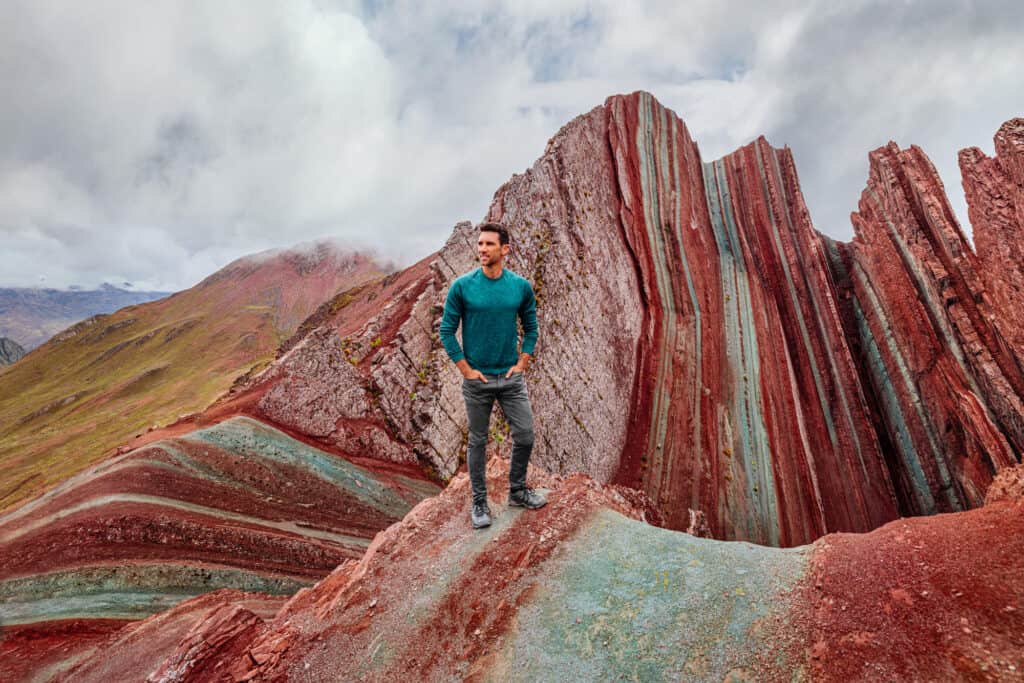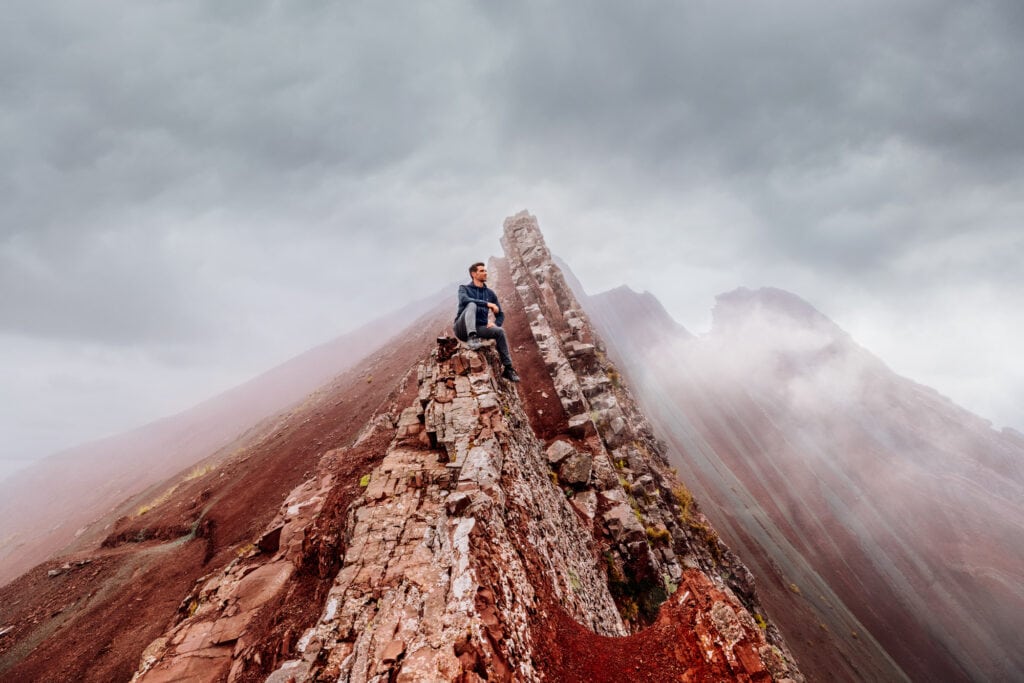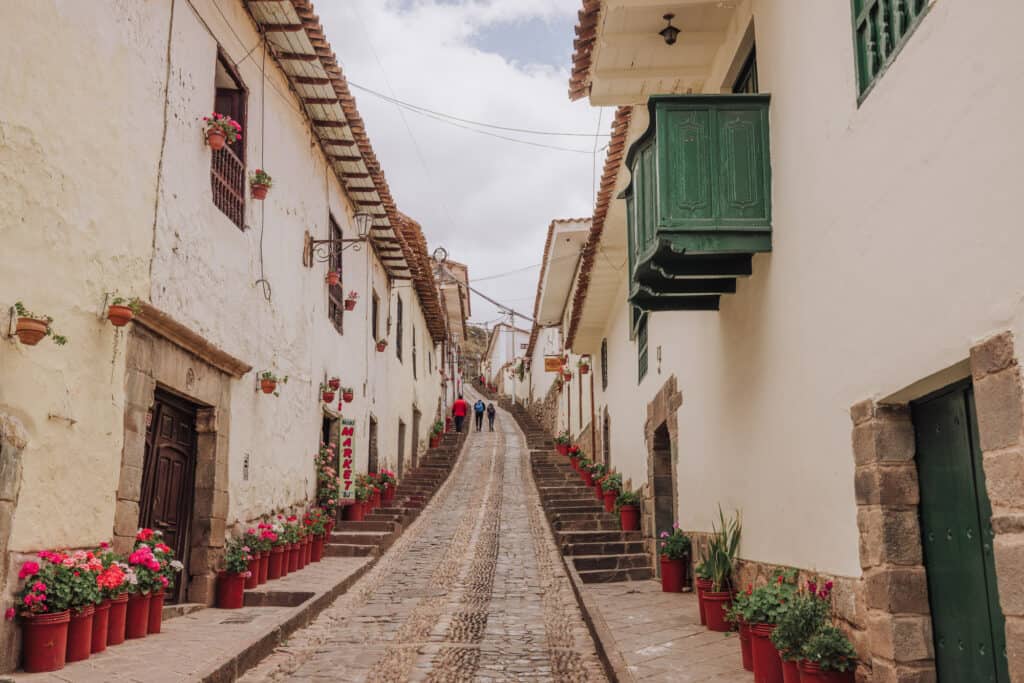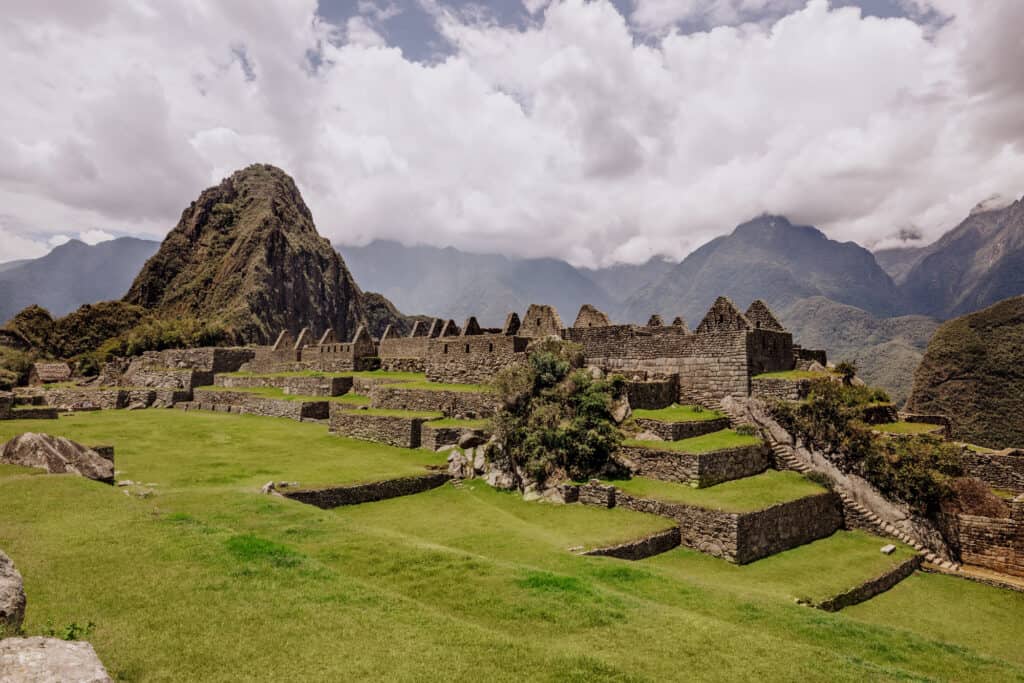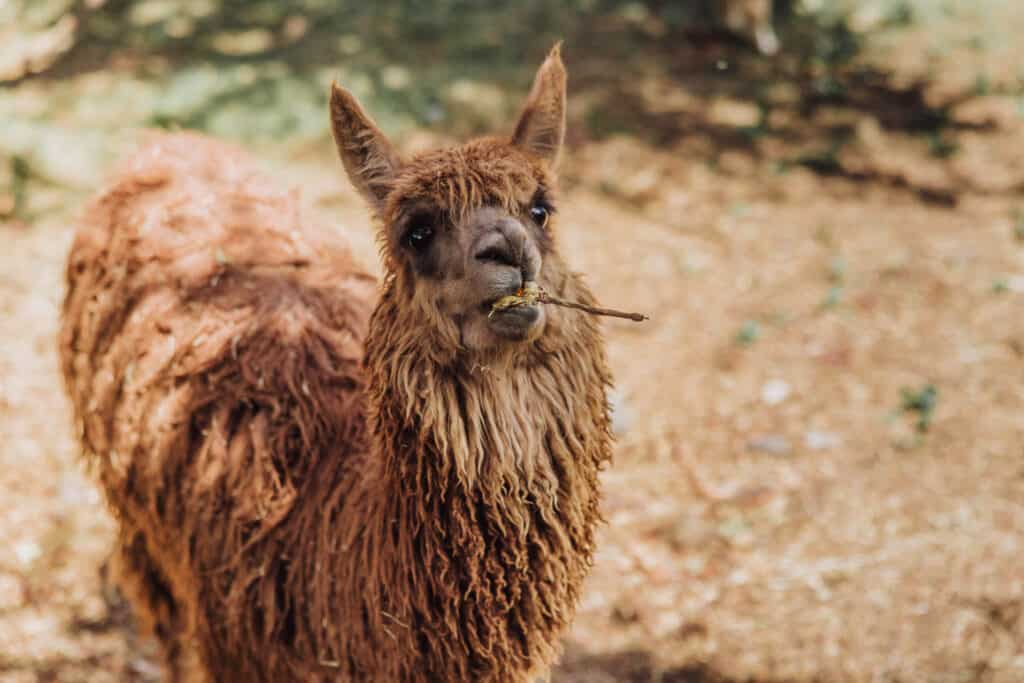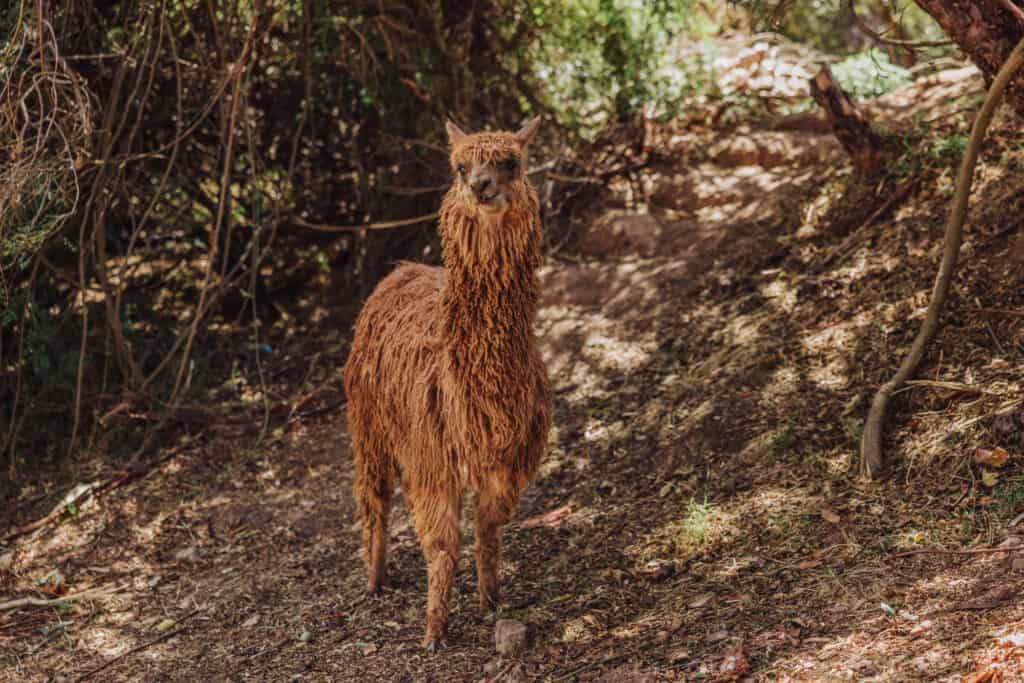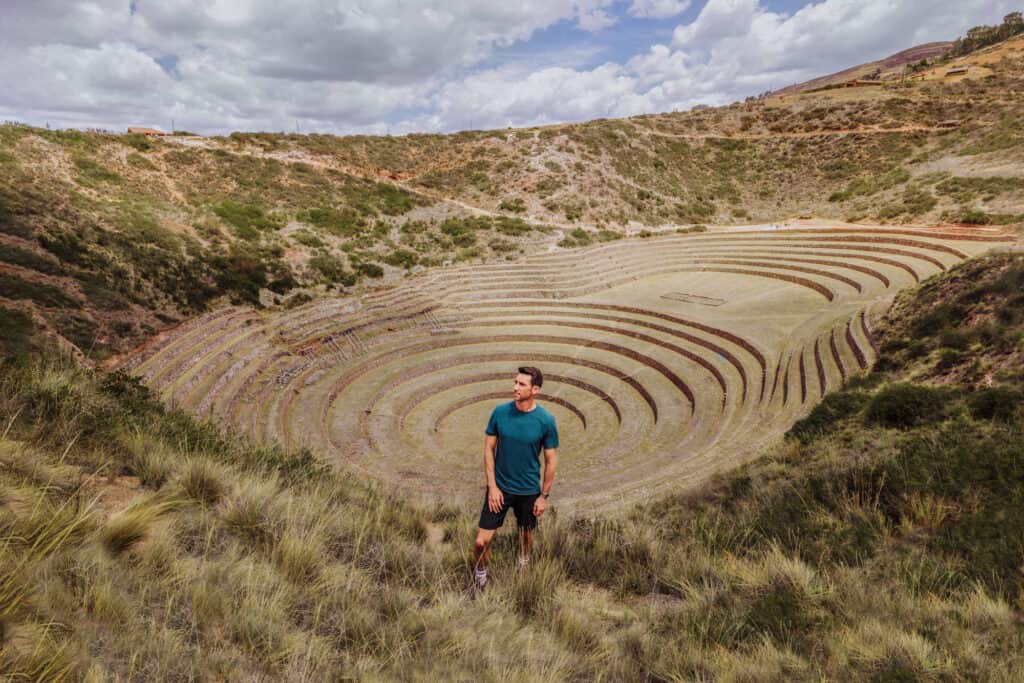Plan Your Peru Itinerary: 7 Days in Cusco
I’ve been to Peru multiple times, and I’ve come up with what I’d consider the best itinerary for 7 days in Cusco. I’m talking about the *region of Cusco, not just the city.
Peru is home to so many diverse landscapes and ancient ruins, that it’s best to focus on a region, like Cusco, for a 7-day visit.
So I’m leaving out Lima, Arequipa, and other parts of Peru, which you can save for a future trip.
Cusco is the part of Peru with the most “bucket list” sites, and the destination I recommend for my friends and family.
The 7-day itinerary I’m suggesting down below is pretty aggressive, with just a bit of “downtime” built in. I travel as efficiently as possible to maximize each day!
So, of course, if you’re looking for more relaxation, you can skip stops, and move at whatever pace you’d like.
The Basics of a Peru Itinerary: 7 Days
No matter which itinerary you ultimately choose, there are a few things that apply to any trip to Cusco, Peru.
1. Fly to Lima
While you’ll be based in Cusco, you’ll likely have to fly into Lima. It’s a much bigger city, and it’s where most international flights will take you.
While Cusco’s airport is seeing more international arrivals, you’re still likely to find a much better deal flying into Lima.
From there, it’s quite a haul on a bus to Cusco. Taking a quick hopper flight from Lima to Cusco is the best option. It’ll take about an hour, and the flights leave every hour (or so).
Personally, I’d avoid even dealing with the hassle of leaving the Lima airport. During my most recent visit, it was swarming with scammers outside. One even posed as an airport “security” officer and tried to take my bags.
If you land in Lima late at night, you can stay at the airport hotel, and take an early morning flight to Cusco to begin your 7-day Peru itinerary!
2. Prepare for High Altitude
Coming from Phoenix (elevation 1,000 feet above sea level), it always takes a day to adjust to the elevation in Cusco (11,000+ feet above sea level).
I only took altitude pills, prescribed by my doctor, on my most recent trip to Peru. I can’t say for sure whether they made a difference or not!
If you’re concerned, you can always request them and take them along.
The hotels and restaurants will offer you coca tea, which has been used since ancient times to help people cope with the high altitude in Cusco.
3. Consider the Season
I’ll talk more about the seasons in the weather section below. The bottom line is, Peru has a rainy season, a dry season, and two shoulder seasons:
- Rainy Season (November to March): Expect frequent rainfall, with the heaviest downpours in December, January, and February. I’ve been to Peru in January, and had a great time, so the rainy season shouldn’t be a “hard no.” Temperatures remain pretty mild, with daily highs 59°F to 68°F.
- Dry Season (April to October): There’s minimal rainfall and lower humidity. Temperatures remain in the same mild range, but can increase into the 70s in July and August. The nights are still cool at higher altitudes.
- Shoulder Seasons (April, May, September, October): These transitional months are my favorite to visit. You risk a rainy day or two, but the weather is otherwise pretty ideal.
4. The Roads
Keep in mind: you can’t drive to Machu Picchu. You can’t take a taxi or hire a driver to get there, either.
The roads in Peru are improving, but they’re still rough and basic dirt or rock in many parts of the country. And, there are no roads to Machu Picchu, or even Aguas Calientes, the tourist town known as the gateway to Machu Picchu.
You’ll have to take the train from either Ollantaytambo or Cusco, and it’ll be a memorable part of your trip.
Now, the Peru Itinerary: 7 Days
Day 1: Cusco
Cusco was the capital of the Inca Empire, and is home to significant archaeological sites like Sacsayhuamán.
It’s a walkable city, with narrow streets winding through the Centro Historico neighborhood’s unique blend of Incan and Spanish colonial architecture.
At around 11,152 feet (3,399 meters) above sea level, altitude sickness can affect some visitors. Once you land in Cusco, you might need a day or two to acclimate.
Locals recommend drinking coca tea to alleviate symptoms of altitude sickness.
The Cusco Ruins: Sacsayhuaman
Sacsayhuaman is actually pronounced “sexy-woman.”
It’s an archaeological site perched on a hill right in Cusco, which served as an ancient fortress, military stronghold, and ceremonial site for the Incas.
The colossal stone walls are made of large, precisely carved limestone blocks. Some stones weigh several tons. The precision is amazing. They truly fit perfectly into a pattern together.
In addition to Sacsayhuaman’s cultural significance, the site offers panoramic views of Cusco and the surrounding valleys.
It’s part of the Historic Sanctuary of Cusco and is designated as a UNESCO World Heritage Site.
You’ll pay 70 Soles to enter, or about $18-$20 USD.
Once on-site, you’re free to roam around, exploring the ruins.
You’ll likely see a herd of alpacas grazing there, too.
The statue was a gift to Cusco from the Palestinian-Syrian community living in the city in 1945. It’s meant to be a symbol of peace between Peru and its neighboring countries.
The statue overlooks Cusco, offering panoramic views of the city and its surroundings.
Visitors can reach the statue either by taking a taxi or walking uphill from the city center.
Plaza Mayor / Plaza de Armas
Plaza Mayor, also known as Plaza de Armas, is the main square and historic heart of Cusco, Peru. It’s the central square and the oldest part of Cusco, dating back to Inca times.
The plaza has gardens and fountains, but the big draws are the surrounding colonial buildings and cathedrals.
They include the Cathedral of Cusco and the Church of the Society of Jesus (Iglesia de la Compañía de Jesús).
While it’s a touristy area, you’ll find several good restaurants around the plaza, featuring second-story balconies. It’s an ideal place to enjoy a meal with a beautiful view of the activity below.
Night 1 of the 7-Day Peru Itinerary
I’d recommend staying in Cusco for your first night, and planning an early morning for day two.
Day 2: Moray, Maras, and the Sacred Valley
For this part of our 7-day itinerary, I’d suggest one of two options:
- Hiring a private driver for days 2 and 3, and spending the night in Mollepata … or …
- Taking a day trip from Cusco, and returning to the city at night.
Either option works:
➡️ Book a Day Trip to the Sacred Valley
Hiring a driver from Cusco for two days will run between $200 and $300 USD.
On day 2, we’ll head to the Inca ruins at Moray, then the salt mines at Maras, before driving through more of the Sacred Valley.
A Morning in Moray:
- Departure from Cusco: Leave Cusco around 7:00am or 8:00am to make the most of the day.
- Drive to Moray: Head towards Moray, known for its impressive agricultural terraces. It’s about a 1.5 to 2-hour drive from Cusco.
Moray is known for its circular terraces, resembling an amphitheater dug into the ground.
Most experts believe the site was used as an agricultural laboratory. The Incas experimented with different crop conditions at the microclimates at each level.
Visitors are free to roam around and walk the trails around the ruins.
Midday in Maras:
- Visit Maras Salt Mines: After Moray, drive for around 30 minutes to reach the Maras salt mines.
- Tour Maras: Spend the afternoon exploring the intricate salt pools and learning about the traditional salt production methods.
Maras is one of the stops on our 7-day itinerary of Pery that doesn’t involve the ancient Incas.
The salt ponds at Maras actually pre-date the Inca Empire.
They’re still operated by local families today, who built a visitor center that attracts fellow Peruvians and tourists from around the world. You’ll learn how they use evaporation to mine salt
The visuals are what attract most people. There are more than a thousand ponds interconnected through the valley.
Afternoon in Urubamba:
Urubamba is nestled in the picturesque Sacred Valley, surrounded by the Andean mountains. The town sits alongside the Urubamba River.
Visitors can wander the streets, checking out local markets and restaurants.
Relax in the Evening
- Drive to Mollepata: Depart for Mollepata, which is roughly a 2 to 3-hour drive… or …
- Return to Cusco: Your day trip tour will bring you back to your hotel in Cusco.
- Relax: Arrive in either Mollepata or Cusco in the late afternoon, and prepare for tomorrow.
Night 2 of the 7-Day Peru Itinerary
The drive to Mollepata is very pretty. You’ll be relieved to have a private driver handling the logistics! The town is very small. I’m suggesting this as an overnight spot because of its proximity to our destination for day three.
I’d suggest staying at the Pincopata EcoCamp. The domes are pretty cool, and their restaurant serves the best food in town.
Day 3: Humantay Lake
The hike to Humantay Lake is well worth the struggle you’ll have in the high altitude! It’s a stunning spot, and perfect for day three of our 7-day Peru itinerary.
The lake is known for its breathtakingly bright turquoise waters, surrounded by snow-capped peaks.
Again, you’ll have two choices on getting here:
- Take a day trip tour from Cusco … or …
- Continue with the driver you’ve hired for two days from the hotel in Mollepata.
An Early Morning!
Hopefully, you got a good night’s rest, because the hike to Humantay Lake will require an early wakeup call, whether you’re going from Cusco or Mollepata.
The Hike to Humantay Lake
It will cost each hiker 20 Soles to hike to Humantay. It’s roughly $5 USD, and you can buy your pass right at the trailhead.
It’s about a two-mile hike to the lake. The first half is flat.
The second mile is a steep climb which most hikers find to be challenging and exhausting! While the incline is a part of it, the high altitude has a bigger impact.
You’ll be climbing at 13,000 – 14,000 feet!
They’ll have horses to rent, if you’re determined to see the lake but don’t feel like over-exerting yourself.
At the lake, you’re likely to find a large crowd gathered around the big rock that’s best for photos.
I’d suggest diverting from the crowd and hiking farther up the trail The crowd thins, and you’re likely to find much more peace and quiet, along with more viewpoints for photos.
Night 3 of the 7-Day Peru Itinerary
If you’ve chosen to take a day tour from Cusco, your driver will bring you back to the city.
Otherwise, if you’ve hired a private driver, I’d have him bring you to Ollantaytambo for the night.
I recommend staying at the StarDome Lodge. It’s a beautiful and unique property high above town.
Most of the rooms are in a large dome, and they have their own restaurant and bar on site!
The view you’ll wake up to in the morning is unforgettable!
Day 4: Ollantaytambo
After breakfast, you can spend the day exploring Ollantaytambo, which is a great living example of an ancient Inca town.
Ollantaytambo served as both a ceremonial center and a fortress during the Inca Empire.
Today, the town is home to two sets of ancient ruins to explore, along with charming cobblestone streets, restaurants, and markets.
Ollantaytambo Ruins
Ollantaytambo’s ruins consist of massive terraces carved into the mountainside.
Visitors can hike up the steep steps, to explore the temples, baths, and ceremonial spaces.
Pinkuylluna Ruins
The Pinkuylluna ruins are lesser-known, but another must-see site on another mountainside overlooking Ollantaytambo.
Positioned high above the town, these ruins served as a surveillance and storage complex for the Incas.
You’ll hike up a steep, rocky trail from the edge of town to the ruins, which are believed to have stored grain and other agricultural products.
The view from the top is incredible, making the challenging climb well worth it.
Ollantaytambo Town
The town of Ollantaytambo is very pedestrian-friendly. I loved walking the streets, checking out the shops, and looking over the menus of the different restaurants.
At one end of town, at the base of the ruins, you’ll find a large open-air market.
In the town’s main square or plaza, you’ll always find taxi drivers, willing to take you to Cusco. The cost is generally $50 USD.
Night 4 of the 7-Day Peru Itinerary
Take a train from Ollantaytambo’s station (walkable in town) to Aguas Calientes, also known as Machu Picchu Pueblo.
You can buy advanced tickets from either PeruRail or Inca Rail. If you’re visiting during the dry season, I’d opt to buy in advance, rather than risk the trains selling out.
There are no roads to Aguas Calientes, so you’ll definitely have to take the train (unless you’d rather hike).
The train station is walkable to all points in town.
You’ll find an abundance of hotels and rentals in Aguas Calientes.
Day 5: Aguas Calientes (Machu Picchu Pueblo)
Aguas Calientes is now officially known as Machu Picchu Pueblo. Either way, it’s the gateway to Machu Picchu!
I think it’s worth spending the day here, as you prepare for your hike to Machu Picchu. This will be a more relaxed day on your 7-day itinerary in Peru.
The town is full of shops and restaurants, many of which have outdoor seating.
There are no cars in Aguas Calientes, so the whole town is walkable and pedestrian-friendly.
As you might expect from its name, there are hot springs. here. You can hike the path just outside of town to take a dip.
Personally, I enjoyed visiting the waterfall and swimming hole just beyond the springs much more!
At some point during the day, go to the Machu Picchu bus ticket office in town and buy your tickets for the following day.
As an example, if you have a 10:00am reservation for Machu Picchu, buy a 9:00am bus ticket. The staff at the counters will help you figure it out. They’re used to it!
Day 5: Machu Picchu
The earlier you reserve your Machu Picchu reservation, the better. Especially in the busy dry season months, you should buy weeks or even months before your visit to ensure you get the timed entry of your choice.
Generally, I’d recommend going to Machu Picchu in the morning. It opens at 6:00am.
The bus will take about 25 minutes to wind its way up the narrow road to Machu Picchu.
These days, you’ll have to choose one of several circuits to explore. You can no longer wander all over Machu Picchu.
For most visitors, Circuit 2 is ideal. It has all of the famous views, and it encompasses most of the site.
If you’re looking to see more of Machu Picchu, or hike HuaynaPicchu, I’d buy a reservation for HuaynaPicchu in the morning, and a separate reservation for Circuit 2 in the afternoon.
If the weather is nice, I’d suggest hiking the tree-lined trail back down to Aguas Calientes, rather than taking the bus back.
Night 5 of the 7-Day Peru Itinerary
Take the train from Aguas Calientes back to either Cusco or Ollantaytambo for the night.
You can stay in Ollantaytambo if it’s late. Or, you can always find a driver in town to take you the additional 90 minutes to Cusco. There are taxis and drivers at the train station in Ollantaytambo and in the main town plaza, at all hours of the day and night.
Day 6: Cusco
Back in Cusco, you can take another day trip tour or just hang out in town for the day exploring the other sites.
San Pedro Market
San Pedro Market is a bustling market in the heart of Cusco.
You can peruse local fruits, vegetables, and meats, which will include things like alpaca and guinea pig.
The Mercado is a great place to find handmade arts and crafts, which are good for souvenirs or gifts.
Night 6 of the 7-Day Peru Itinerary
Spend the night in Cusco, and head to bed early! The alarm will be set for a couple of hours before dawn for day 7!
Day 7: Rainbow Mountain
You have two choices when it comes to visiting a “rainbow mountain” in Peru.
Both are full-day trips from Cusco.
The Rainbow Mountain you’re probably picturing is officially known as Vinicunca. While the stripes in the minerals on the mountain are more muted and natural than what you see on Instagram, they’re still beautiful and well worth a visit.
The “new” Rainbow Mountain is in the same region, and it’ll provide a totally different kind of experience.
Rainbow Mountain: Vinicunca
Vinicunca is about 100 kilometers southeast of Cusco, but you’ll drive over rough roads so it’ll take a few hours to get there.
Most tours depart from Cusco early in the morning. You’ll arrive with many other people, eager to see just how vibrant the colors really are!
The hike to the viewpoint is beautiful, but challenging due to the thin air at the high altitude.
The weather in the Andes can be unpredictable, so dress in layers and be prepared to be both cold and hot over the course of the day!
Pallay Punchu: The “New” Rainbow Mountain
Pallay Punchu started to get more popular during the pandemic. It’s about a three-hour drive through rural Peru to the trailhead.
This is another destination I’d suggest taking a tour to, since the route is confusing and the roads are rough. Streams literally run over the dirt roads in some spots.
It’s not crowded, by any means. On our visit, there was only one other car in the parking lot at Pallay Punchu.
You’ll find a different kind of “rainbow” in the. mountains here. Stripes of turquoise and maroon are created by copper and iron in the rocks.
The trail isn’t overly steep, but it’s challenging nonetheless due (again) to the high altitude!
Night 6 of the 7-Day Peru Itinerary
Head back to Cusco for your final night in Peru!
A Budget Peru Itinerary for 7 Days
I’m always surprised by the prices of different things in Peru. Sometimes you’ll find great $500 flights from American cities to Lima, but then the short hopper flight from Lima to Cusco will be another $300!
Here are a few ways to save money:
1. Flights
Flights to Lima will almost always be the cheapest. Book in advance and hope for a deal on Latam Airlines to take you from Lima to Cusco. Other airlines to check are:
- Sky Airline
- jetSMART
You’ll almost always find flights for well under $100. Try not to check luggage to save on those extra fees!
2. Hotels & Hostels
In Cusco, you’ll find a wide array of accommodations, from 5-star hotels to much cheaper hostels.
Be sure to check AirBnB and VRBO for rentals under $40 a night.
3. Buses and Trains
The trains are surprisingly expensive. Check to see if they have the no-frills seats available from Ollantaytambo to Machu Picchu.
Taking the bus from Cusco to Ollantaytambo is the most cost-effective way to travel.
4. Drivers & Ubers
Uber prices in Cusco are very affordable, and far less than what we’re used to paying in the USA.
5. Travel in the “Off” Season
You’ll save on hotels and transportation by visiting Peru in the rainy season or shoulder season. Prices peak in the dry summer months. As I said earlier: I’ve been to Peru in January, and had a great time despite the rain showers!
The Best Time of Year to Spend a Week in Peru
This is subjective.
For me (for this 7-day itinerary in Peru) I’d aim for:
- late April
- May
- September
- or early October
As I said earlier, I’ve also spent a week in Peru during January (the rainy season). It rained on and off (and snowed at Rainbow Mountain), but we still had a great time.
For most travelers, the optimal time is during the dry season, which spans from April to October.
Visiting in the shoulder months should mean good weather and smaller crowds.
Average Temperatures in Cusco
These are the average monthly temperatures in Cusco. Note that they really don’t vary much!
Just keep in mind: temperatures at locations like Machu Picchu and Rainbow Mountain can be different than what you find in Cusco.
- January: Highs around 66°F (19°C), Lows around 43°F (6°C)
- February: Highs around 66°F (19°C), Lows around 43°F (6°C)
- March: Highs around 66°F (19°C), Lows around 41°F (5°C)
- April: Highs around 66°F (19°C), Lows around 39°F (4°C)
- May: Highs around 66°F (19°C), Lows around 37°F (3°C)
- June: Highs around 64°F (18°C), Lows around 32°F (0°C)
- July: Highs around 64°F (18°C), Lows around 32°F (0°C)
- August: Highs around 66°F (19°C), Lows around 32°F (0°C)
- September: Highs around 66°F (19°C), Lows around 34°F (1°C)
- October: Highs around 66°F (19°C), Lows around 37°F (3°C)
- November: Highs around 66°F (19°C), Lows around 39°F (4°C)
- December: Highs around 66°F (19°C), Lows around 41°F (5°C)
What to Pack for a 7-Day Peru Itinerary
Packing for a week-long trip through the Cusco region requires some basics, regardless of the season.
If you’re going during the dry months, there’s no need for a rain shell. You can always buy a poncho if a storm is expected.
1. Clothing:
- Layers: T-shirts, long-sleeve shirts, and a lightweight jacket for cool evenings.
- Warm Layers: A thermal base layer or sweaters for colder nights or higher altitudes (remember, it snows up high!).
- Waterproof Jacket: For the rainy season.
- Comfortable Pants: Hiking pants and shorts.
- Comfortable Shoes: Sturdy footwear for walking and hiking. Break them in before your trip.
2. Accessories:
- Hat: Wide-brimmed or a cap for sun protection.
- Gloves and Scarf: It’s cold early in the morning high in the mountains.
- Sunglasses: UV protection due to higher altitudes.
- Daypack or Backpack: For day trips.
- Reusable Water Bottle: Staying hydrated is crucial, especially at higher altitudes.
- Hiking Gear: Trekking poles.
3. Healthcare:
- Altitude Sickness Medication: Consult a doctor. I’m still not sure if they helped me!
- Sunscreen: High SPF due to increased UV radiation at higher altitudes. Even if it’s cloudy, you’ll need it.
FAQs About a Peru Itinerary for 7 Days
Let’s tackle a few frequently-asked-questions about a 7-day itinerary in Cusco, Peru. Some of these were answered above.
What’s the elevation of Cusco?
The elevation of the city of Cusco is a bit higher than 11,000 feet above sea level.
Should I rent a car and drive for my week in Peru?
I’ve driven in a lot of countries around the world. Peru is one country I’d avoid renting a car to drive in. Unless you’re there for a month-long road trip, with extra time to spare by getting lost, etc., you should rely on private drivers, buses, and trains to get around.
What time zone is Cusco in?
Depending on the time of year, Cusco (and all of Peru) is either in the Central Time Zone or Eastern Time Zone.
It’s a perk of visiting this part of South America. You can spend a week here and not worry about jetlag!
